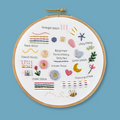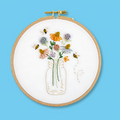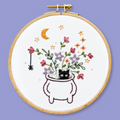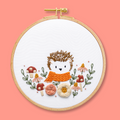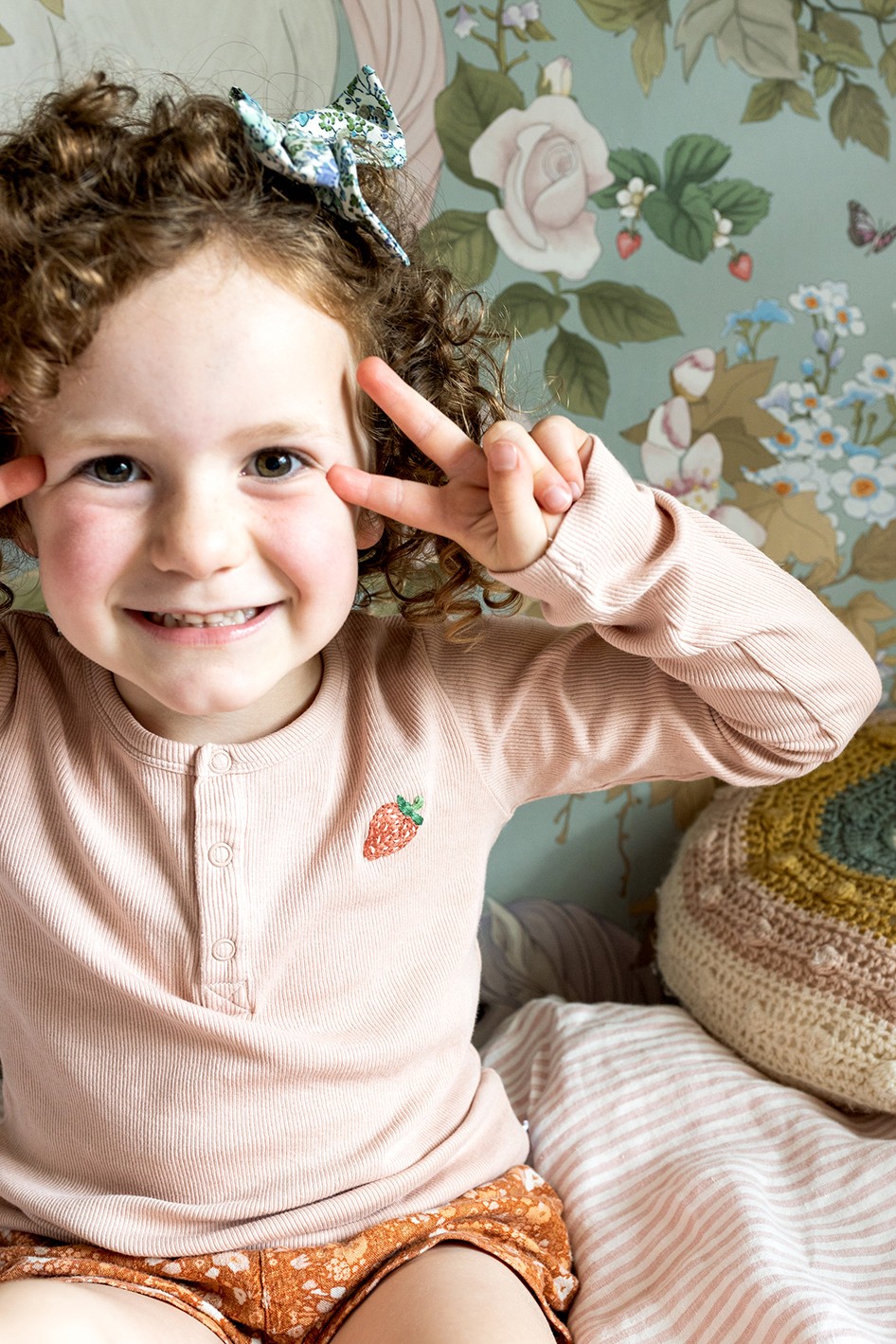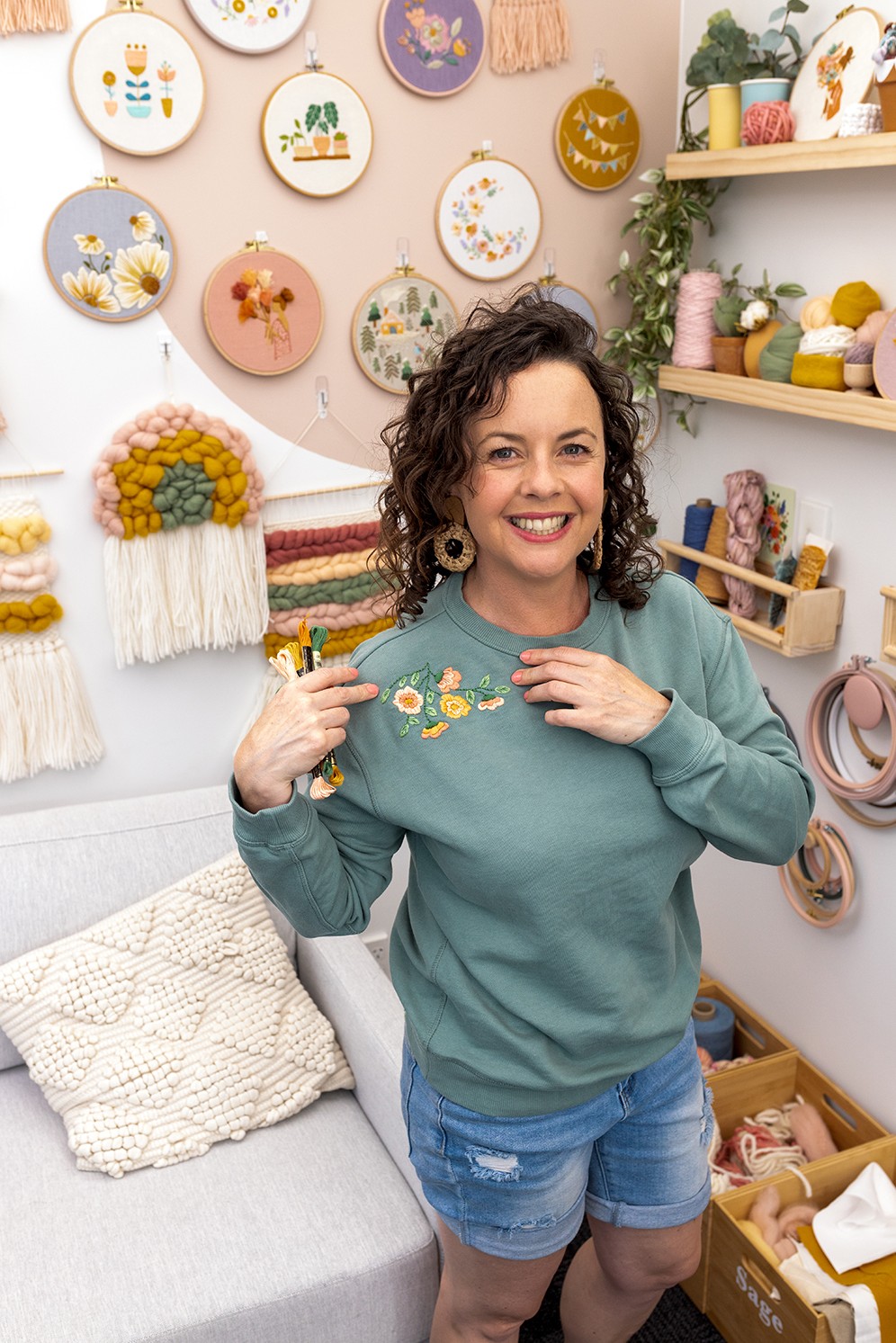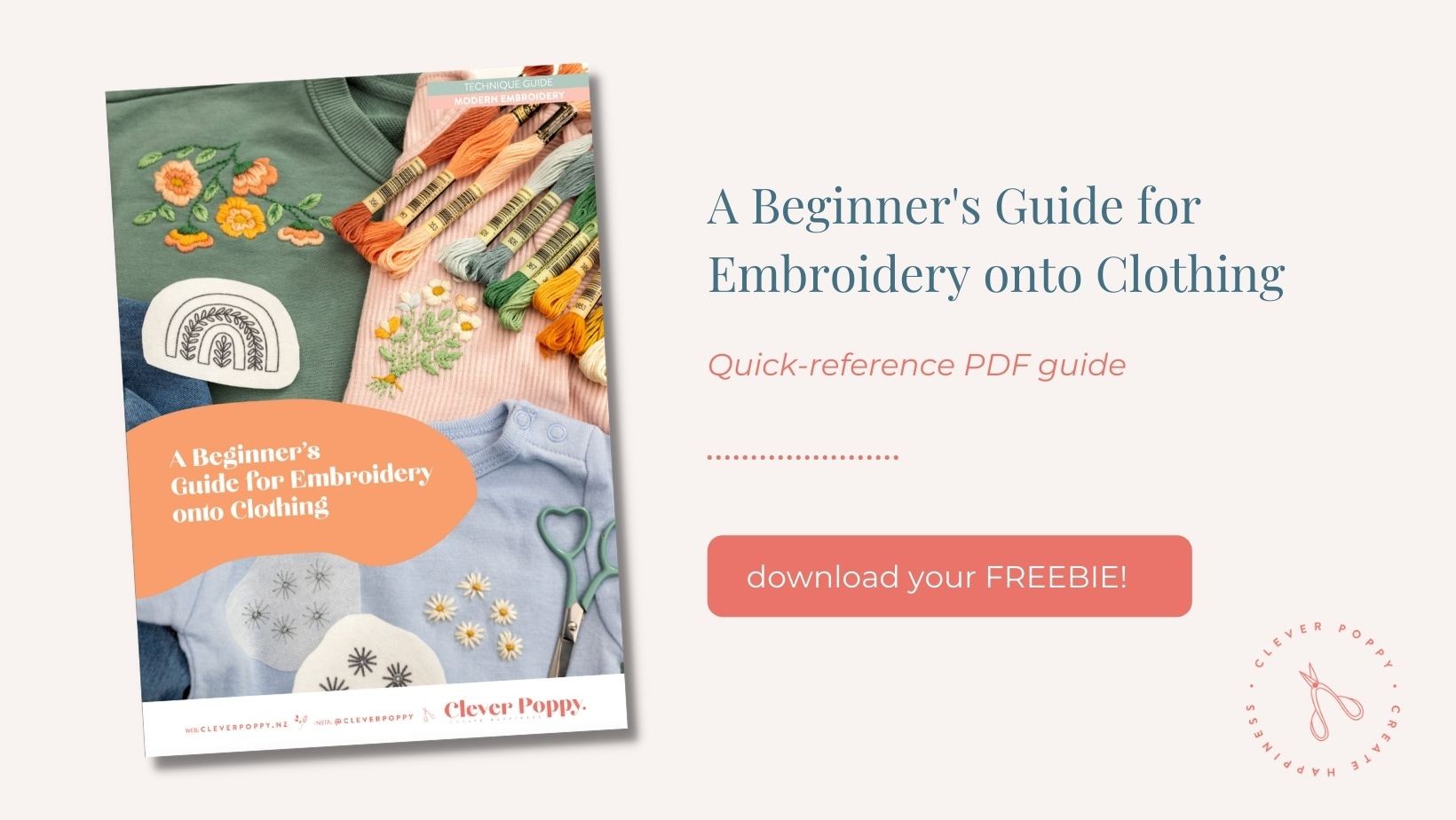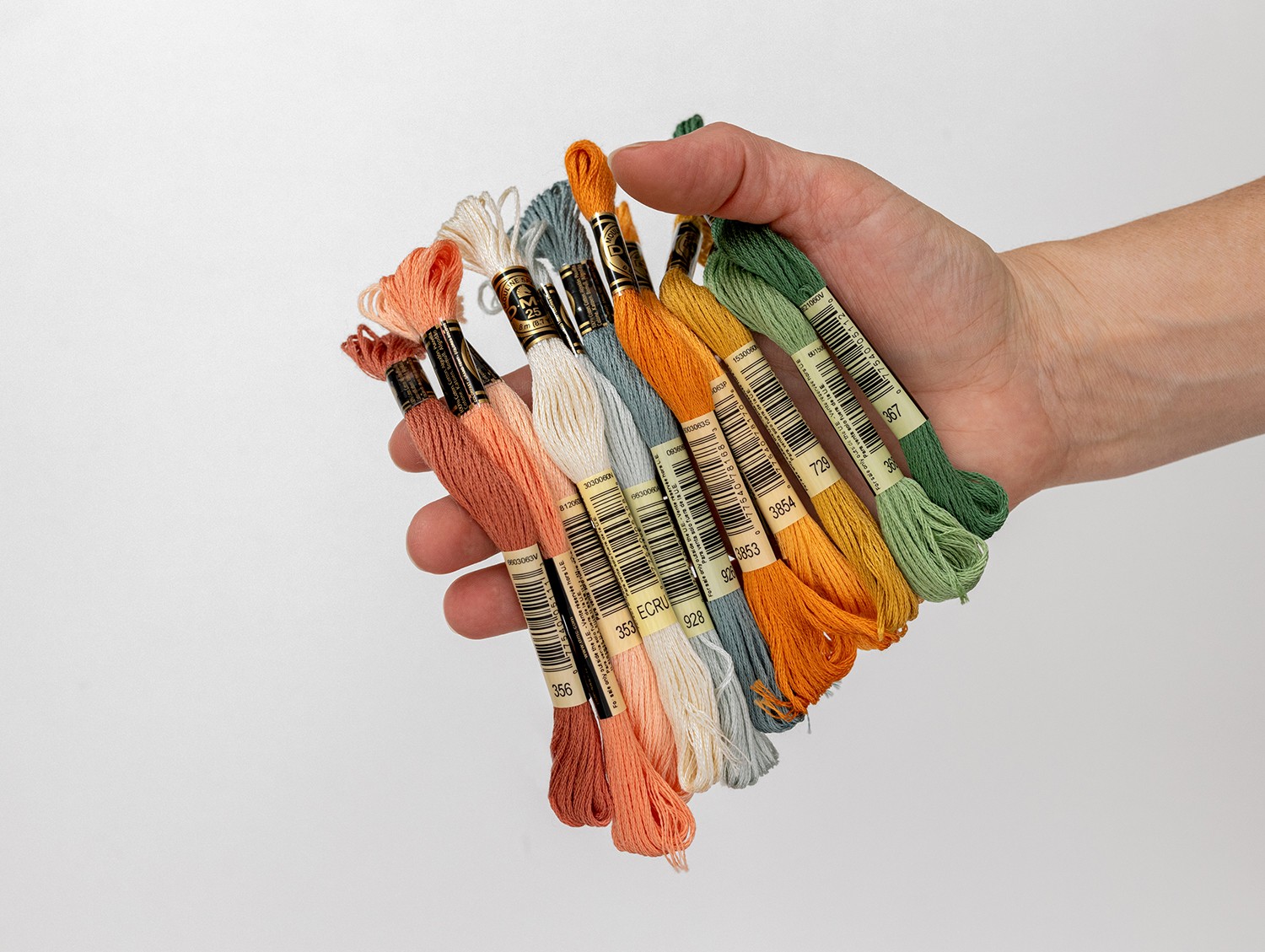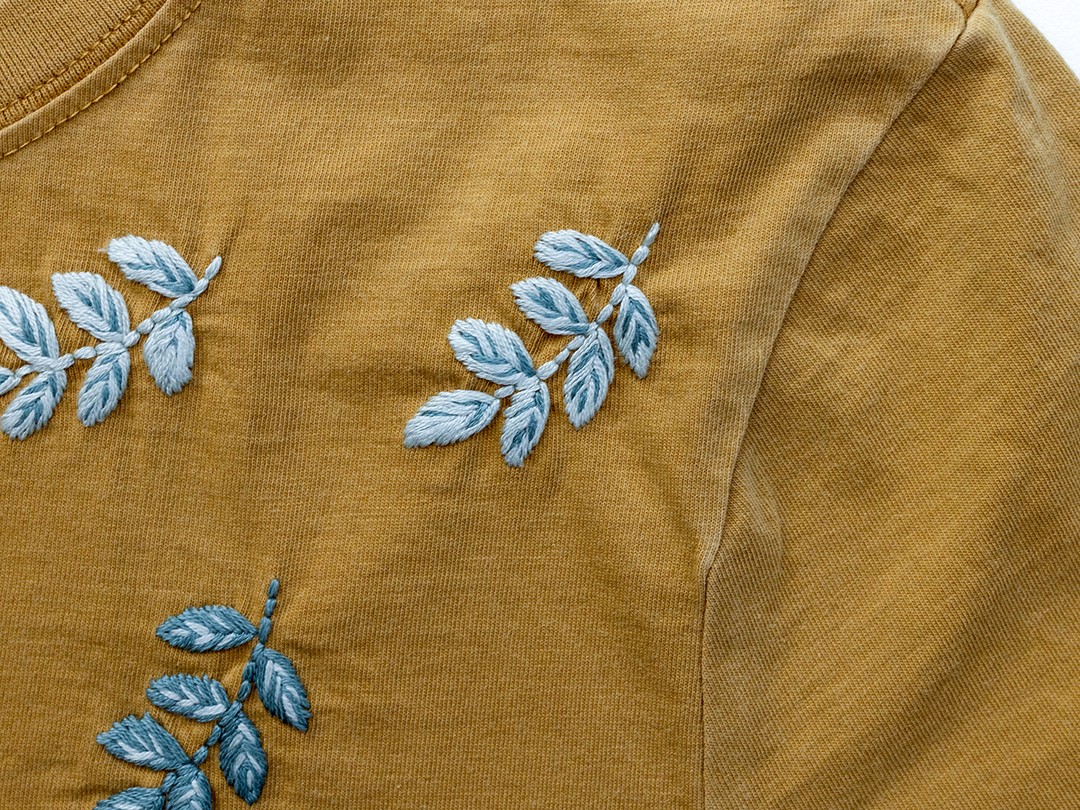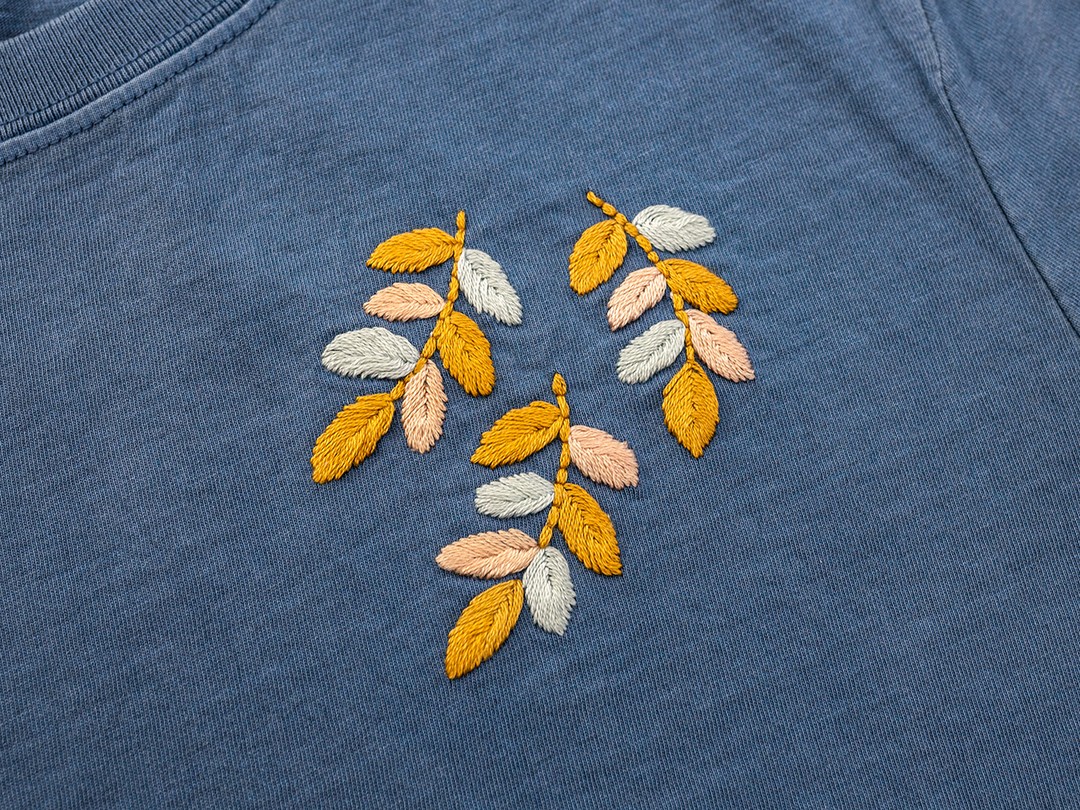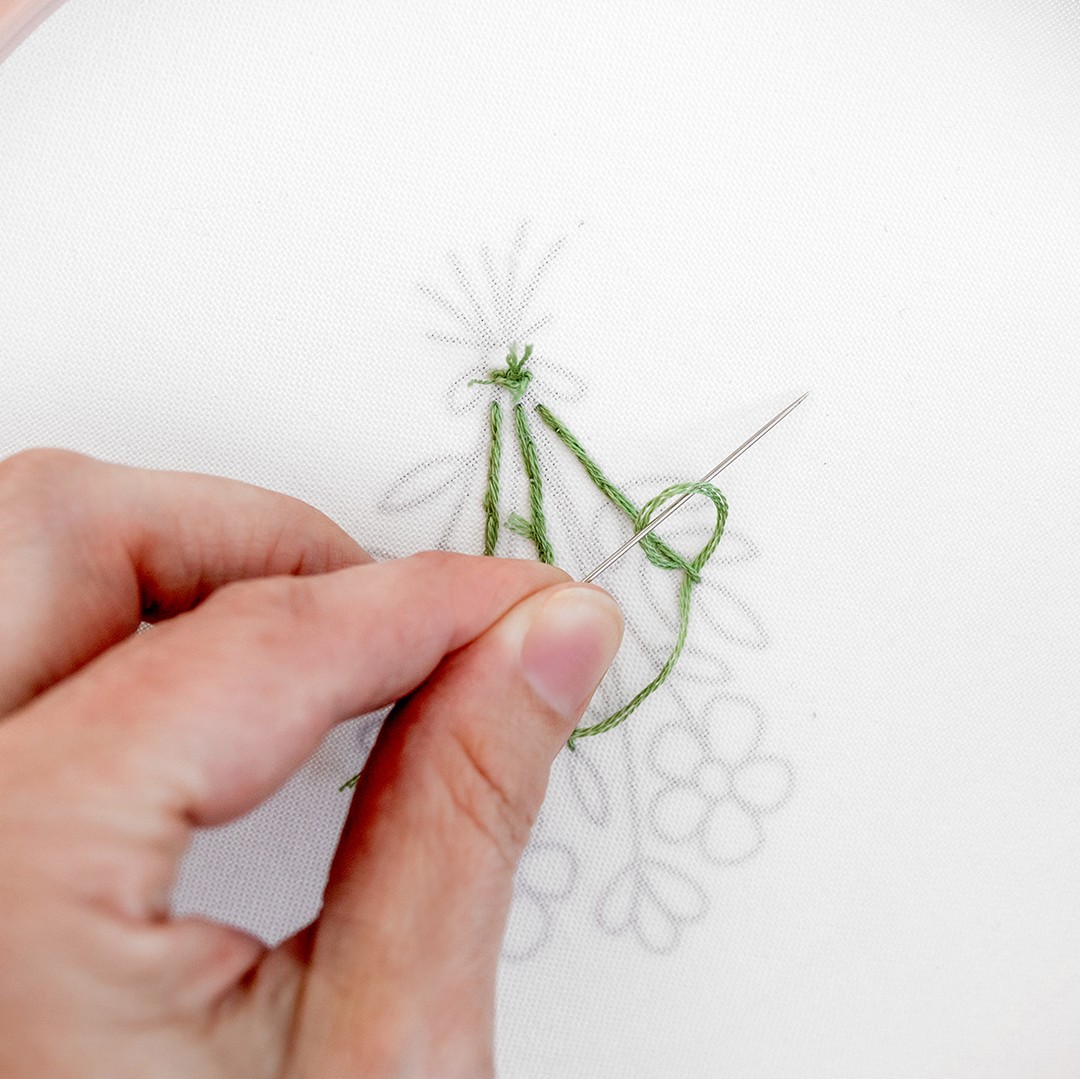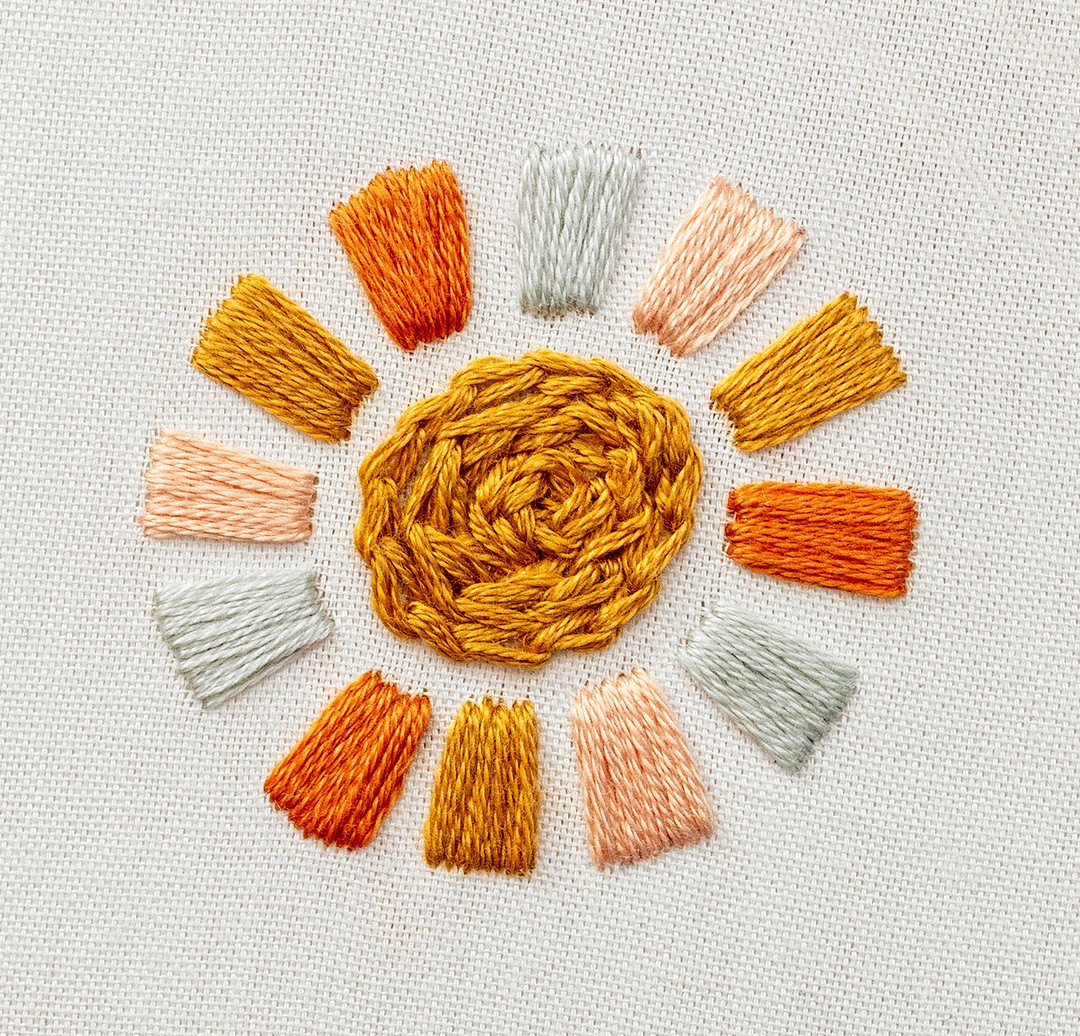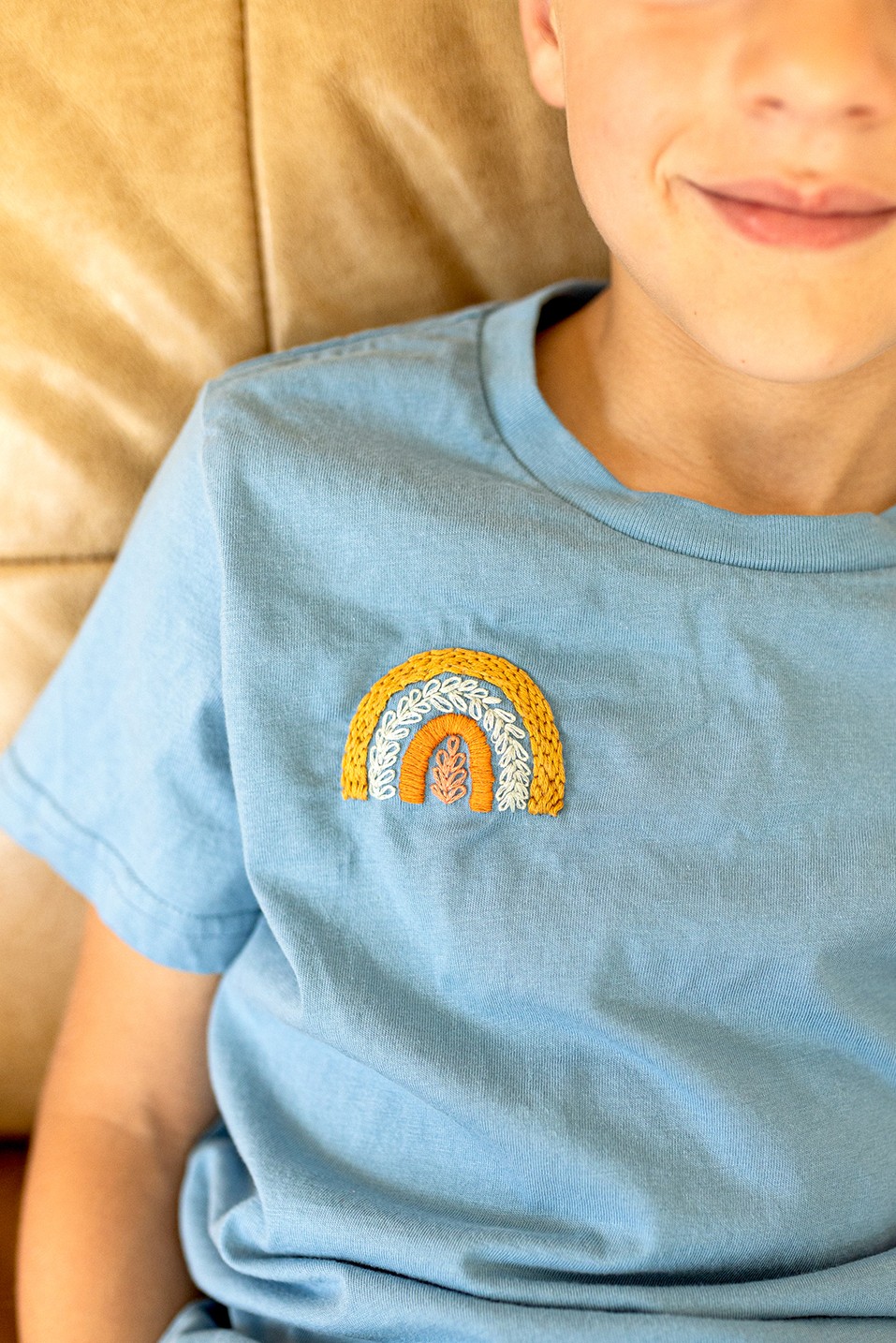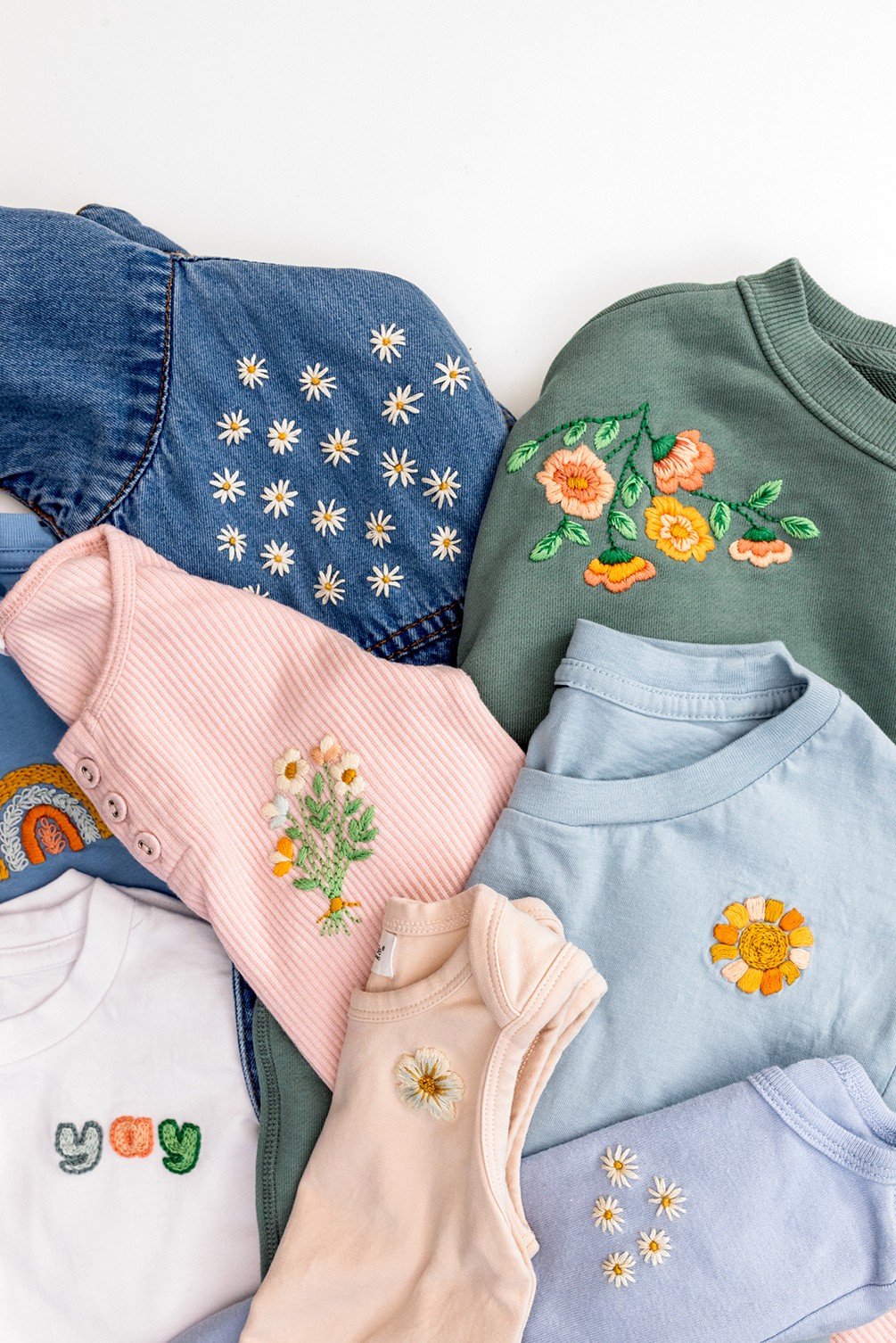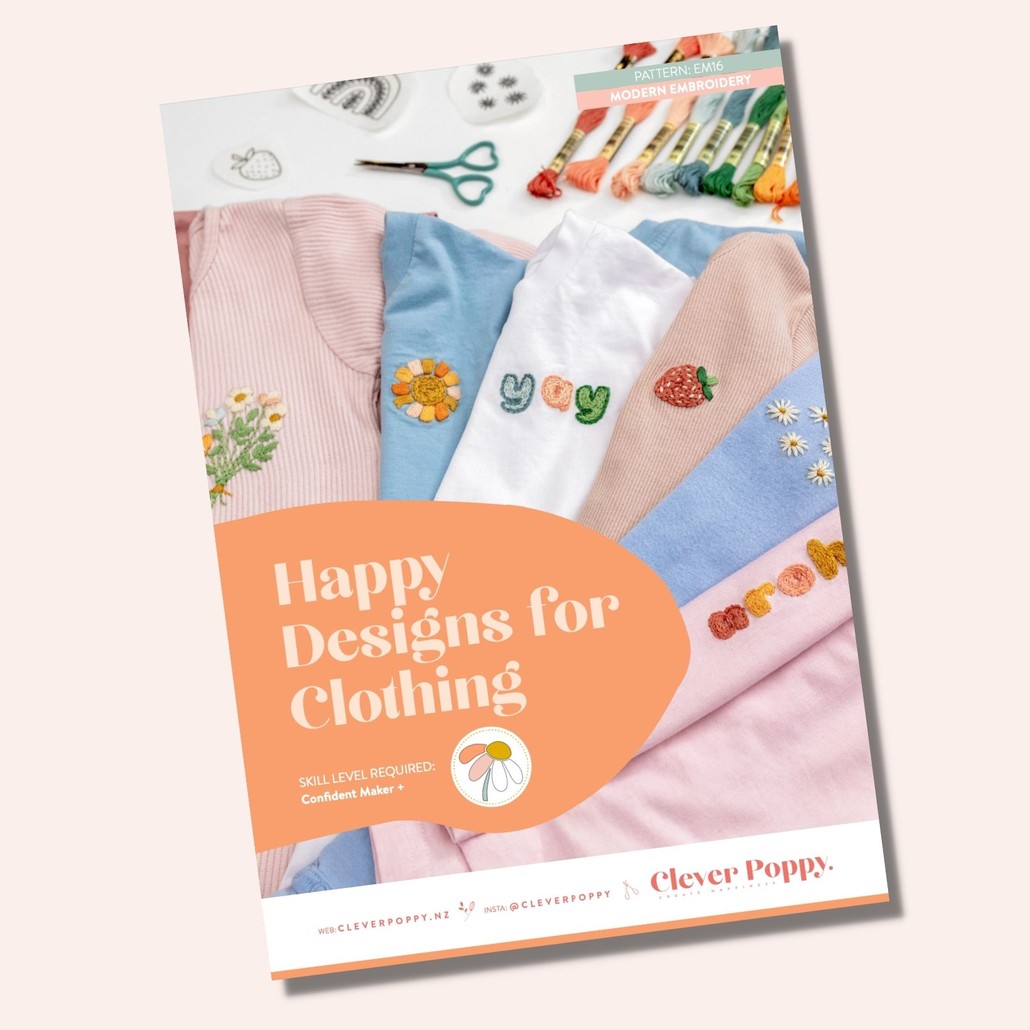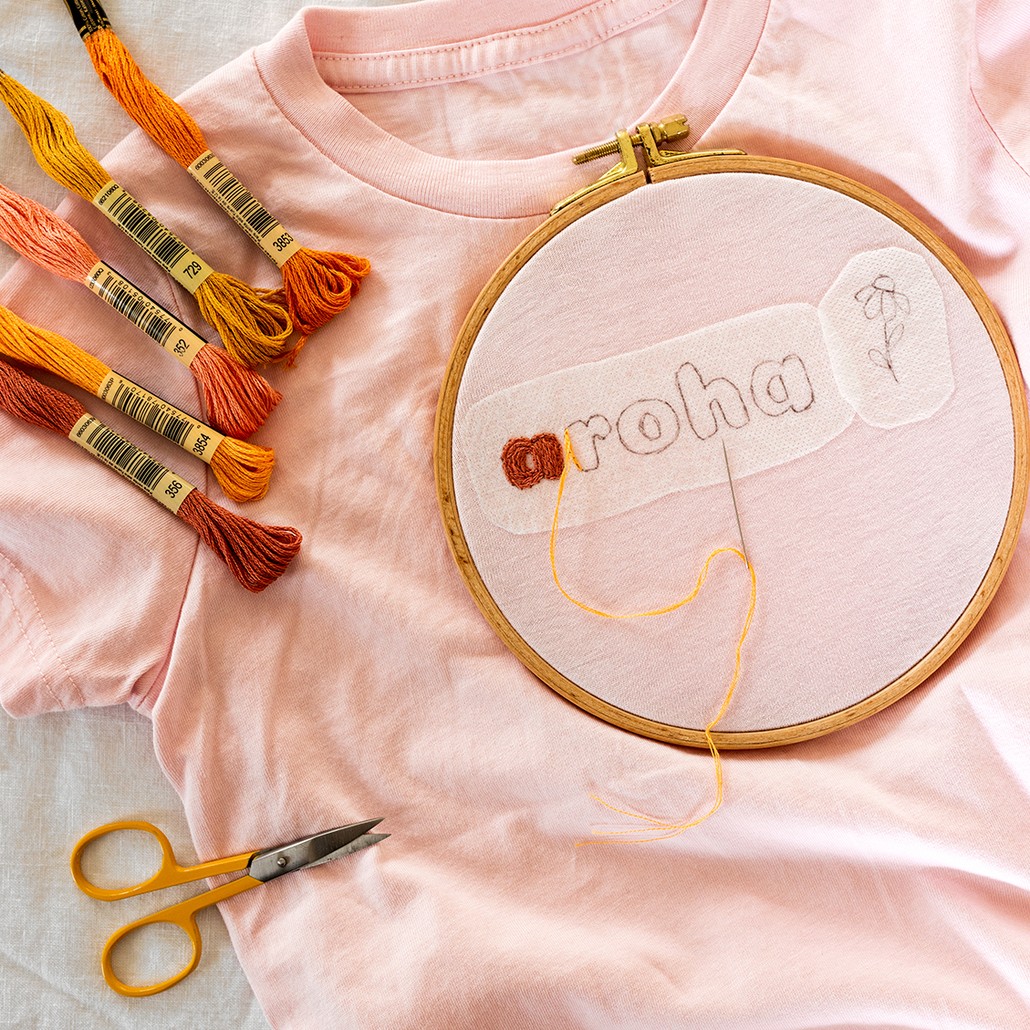A Beginner's Guide for Embroidery onto Clothing
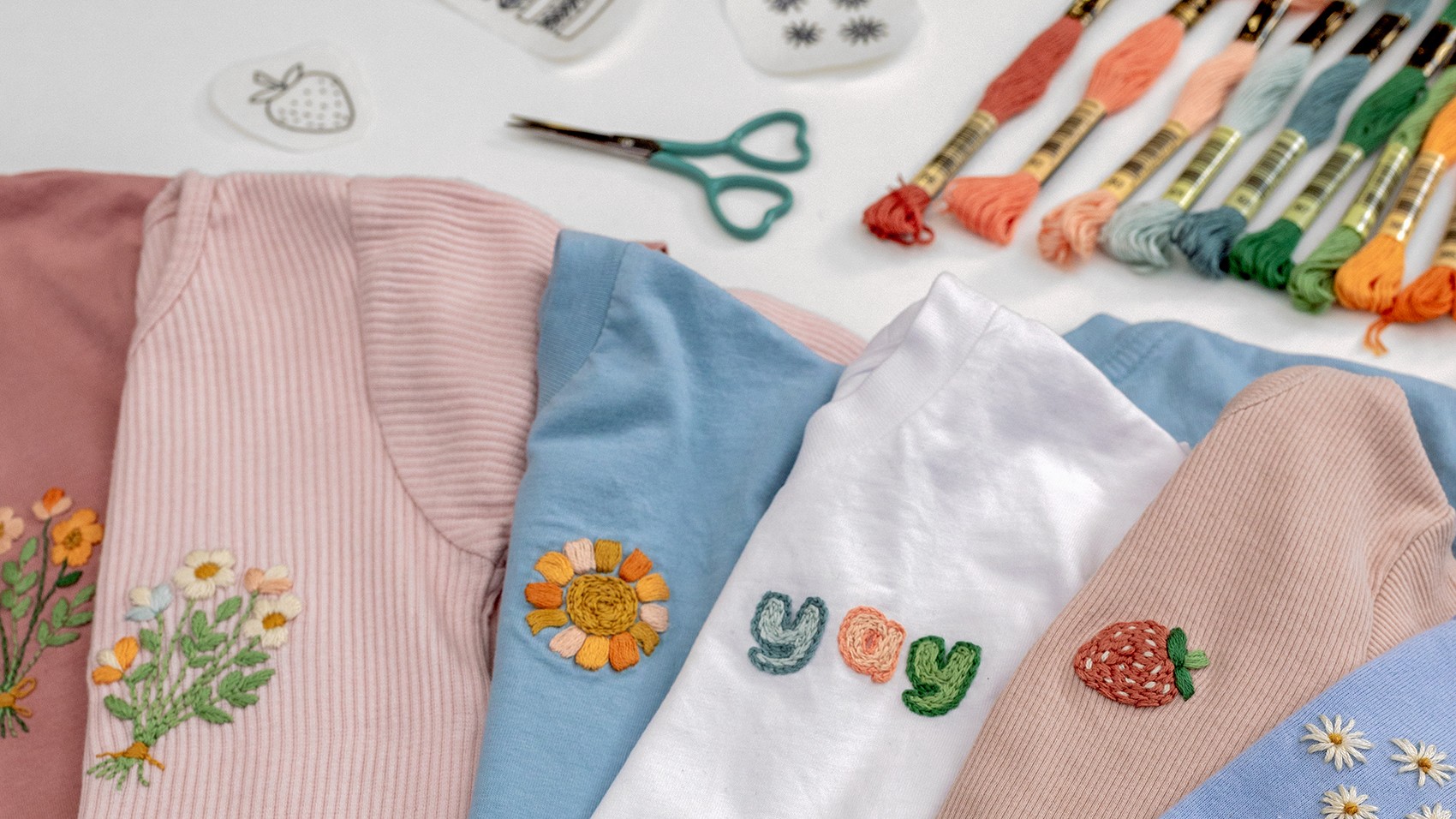
Introduction
I am super excited to teach you all of my top tips for embroidery onto clothing!
One of the BEST things about learning hand embroidery, is using your awesome skills to stitch onto functional pieces, like clothing and accessories.
It is SO much fun, and super rewarding when you get to wear your beautiful creations!
I’ve been doing a lot of testing and research on this topic, and I’ve learnt that it’s definitely a lot more challenging than you might think. This is because clothing is a lot more varied in terms of the fabrics and shapes of what you’re trying to stitch on. This makes it trickier to turn the area you want to stitch into a nice firm platform. Any design you stitch onto clothing will also need to be able to withstand more wear and washing than a piece that’s destined to be art on your wall.
But you know what? I’ve absolutely loved the whole process, and even though it’s extra challenging, it’s also extra rewarding!
In this blog, I’ve shared all my key learnings to date on this topic, so that you can feel really confident and excited to give it a go yourself.
I want to note that this isn’t a comprehensive guide, that you can follow for a perfect result. Because the nature of stitching onto your own clothing and accessories means that each project will have its own unique challenges.
You’ll need to go on your own journey, but you can rest assured that you’ll be starting from a great place after reading this blog. And I just know you’ll love it, learn lots, and create some amazing, beautiful pieces that you’ll be so proud to wear!
Download the pdf: A Beginner's Guide for Embroidery onto Clothing
Before we go any further, I want to let you know that I've also collated all of these tips and learnings into a pdf download. Which makes it super easy for you to save and refer to my tips whenever you need to.
You can keep scrolling to read this blog, or jump straight to my pdf guide.
Just head here to grab your free copy!
Ok, so let’s get started on my key tips and learnings!
1. What kind of fabric can I stitch on?
As with usual hand embroidery, you can stitch on most fabrics, but some will be much more enjoyable and give you a way better chance of success!
Here’s some points to consider when you’re choosing what to stitch on:
-
Stretch: It’s so much easier to stitch upon fabrics that are not stretchy, or that have just a small amount of stretch.
-
Fabric weight: You want to be able to pass your needle back and forth through the fabric with ease. So avoid thicker fabrics that require a lot of force to push and pull your needle through, or you’ll end up with a bent needle and sore fingers! As a general rule, medium-weight fabrics are great (like your usual t-shirt material).
My fav fabrics to stitch on:
-
100% cotton
-
Linen
-
Denim
Fabrics I enjoy stitching on, but that are a bit trickier:
-
Blended fabric (e.g. fabric that’s made with a majority of cotton – blended with some elastane, polyester or modal)
So far I’ve avoided:
-
Satin
-
Tulle
-
Anything quite stretchy
-
Fabrics with a loose weave
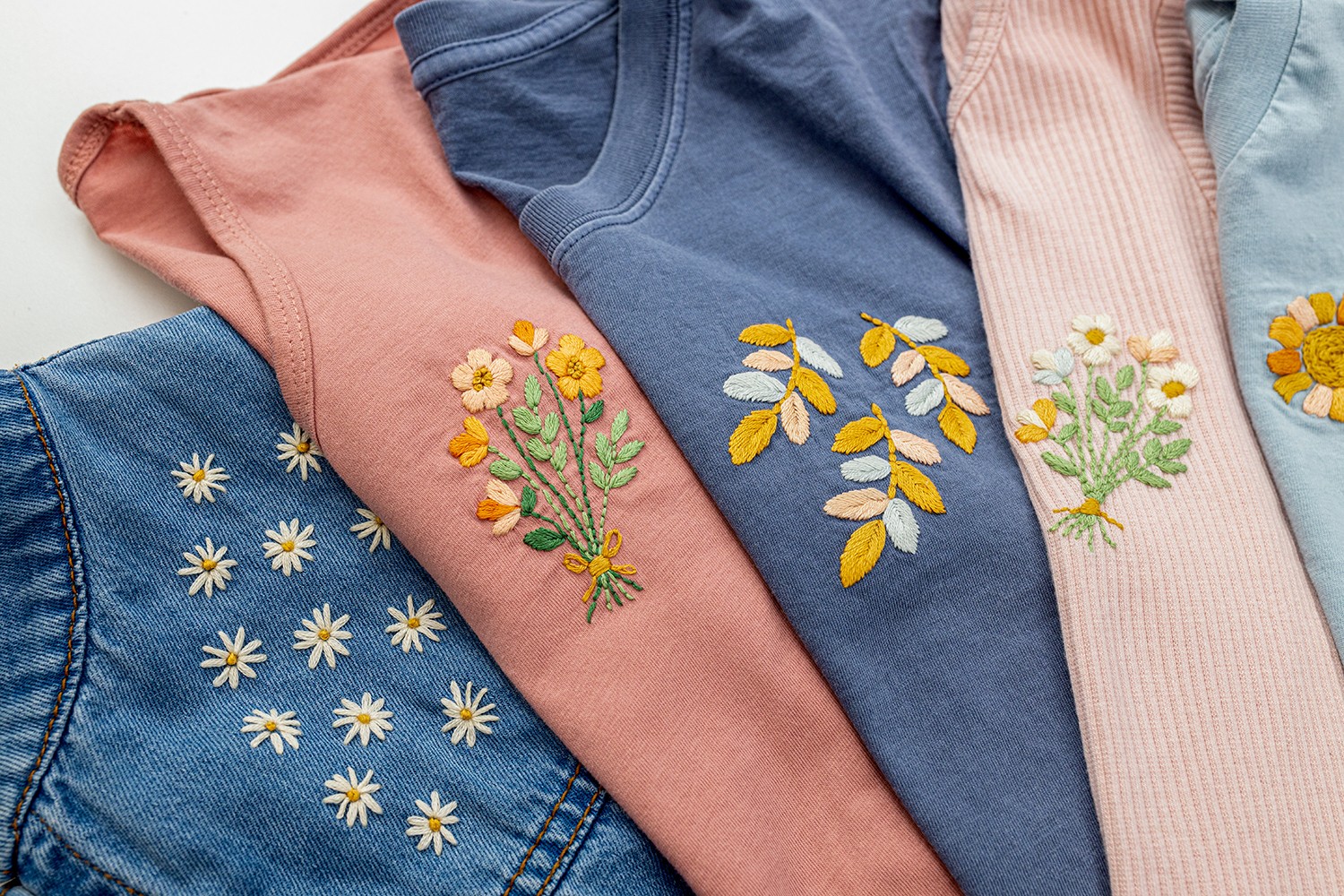
2. Before you start
I recommend washing any new clothing before you do any hand embroidery on it, just in case it shrinks a bit or the colour runs.
Also, if it’s a precious piece of clothing, I definitely recommend you practice on a test piece first (test both the stitching and how colourfast your threads are).
3. Tell me about stabilisers
In a nutshell, stabilisers help to provide structure to firm up your fabric, and prevent your designs from distorting as you stitch along.
Stabilisers are something you do need to consider when you’re embroidering onto clothing. You see, usually we place a flat piece of fabric in a hoop, and pull it really taut – this creates a lovely firm platform to stitch upon. But clothing is naturally a bit trickier to hoop in this way. For example, it might be an unusual shape, with seams and edges that make it tricky to hoop the area you want to stitch on. Or it might be too delicate or thick to dress in a hoop. Also, dressing stretchy fabric in a hoop might distort the shape of your design.
So by using a stabiliser, you can reinforce the area you want to stitch upon – this creates a more stable platform, which is more enjoyable and manageable to stitch on. Plus, it helps prevent the shape of your design from stretching and distorting while you stitch along.
You can use stabiliser on its own, or double it up with using a hoop (this is what I usually do). If you do use a hoop, make sure you apply the stabiliser first. See the hoops section for more on this topic.
You can also find stabilisers which double as a backing for finished embroidery. This means that you apply the material to the underside of your design after you’ve stitched it, to protect and cover the stitches (handy if you have sensitive skin).
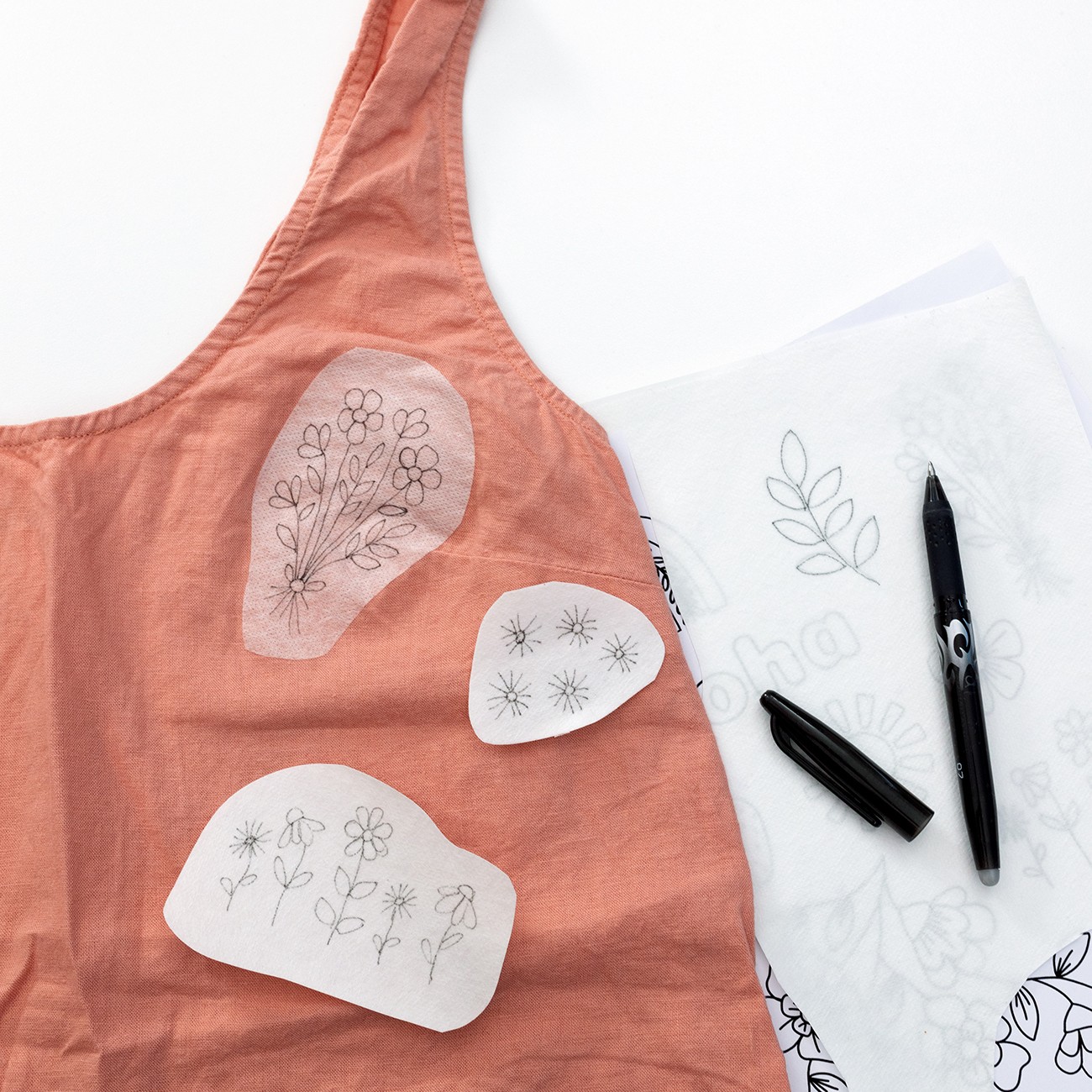
There are two types of stabilisers that I have tested
1. ‘Stick and Stitch’ style stabilisers
These are fantastic! You basically draw or print your design on the sheet of stabiliser, cut it out into a patch, and then stick it onto your clothing (positioning it where you want your design to sit). Then you stitch your design right onto the stabiliser patch, and rinse off the stabiliser when you’re finished.
I love how easy this makes the process, because you can easily see your design, and it really helps firm up the area you’re stitching on.
The downside is that they make your needle quite sticky (which can make it harder to push through your fabric) and you have to wet your design to wash it off. But I find the benefits totally outweigh any downsides.
Recommended product: Recommended product: Our own brand of stabiliser, available in our Stick and Stitch packs!
Also tested and liked: Sulky Sticky Fabric-Solvy stabilizer and DMC Magic Paper
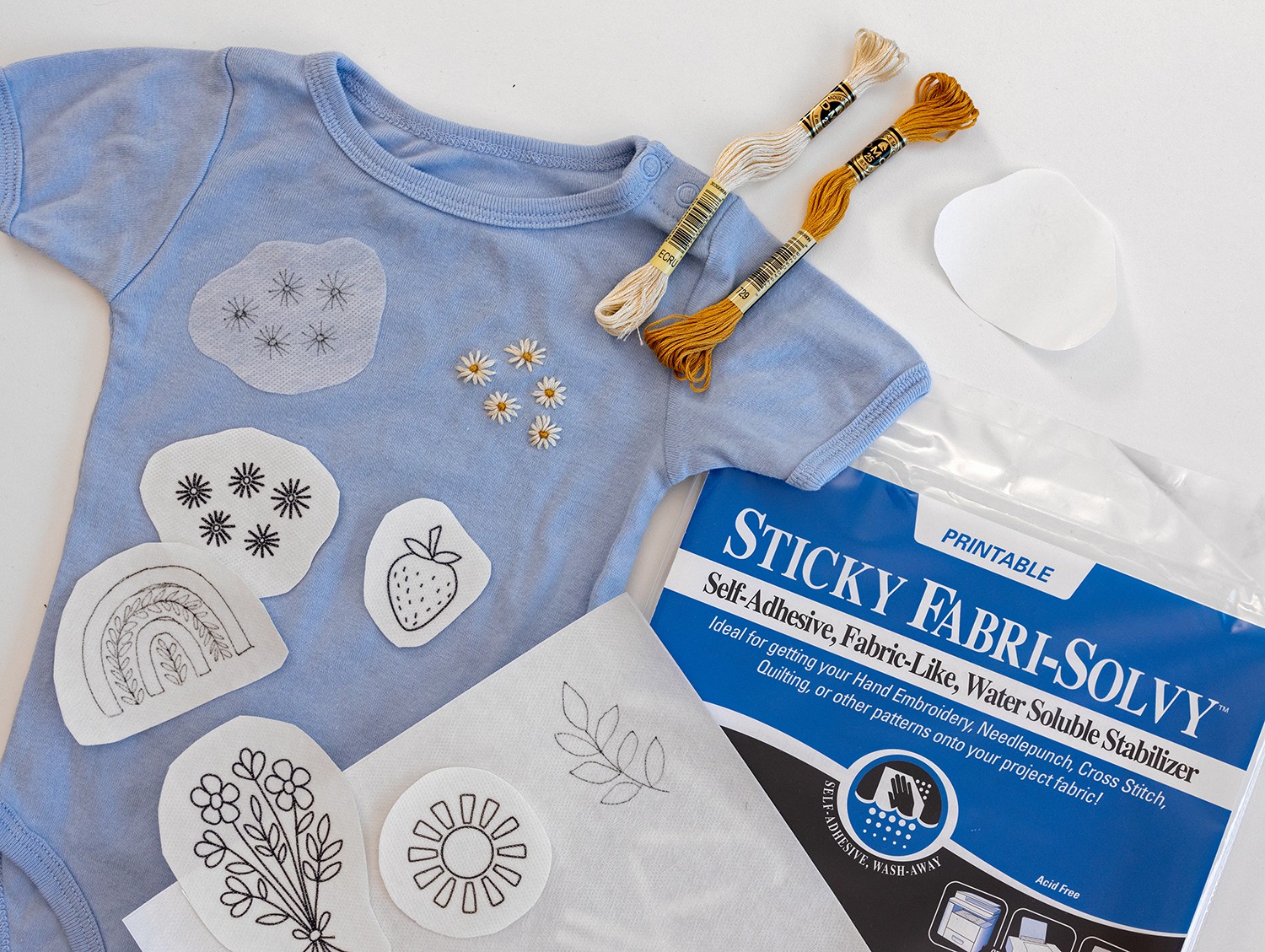
2. ‘Cover a stitch’ style backings
This type of stabiliser performs a totally different role to the ‘Stick and Stitch’ patches. You apply it after you’ve finished stitching.
Firstly, it protects the underside of your stitches so that they experience less friction during general wear and washing – this means they’re less likely to unravel.
Second, it provides a layer in between your skin and the stitched design, which prevents any irritation and scratchiness that might occur – this can be helpful with baby clothes and anyone with sensitive skin.
I personally haven’t found this necessary on the designs I’ve stitched, but it’s totally up to you if you want to apply a backing.
Recommended product: Sulky Tender Touch “Cover-a-stitch”, which is quite a lightweight option that goes with the drape of your fabric. It can also be used as a regular stabiliser on very lightweight fabric.
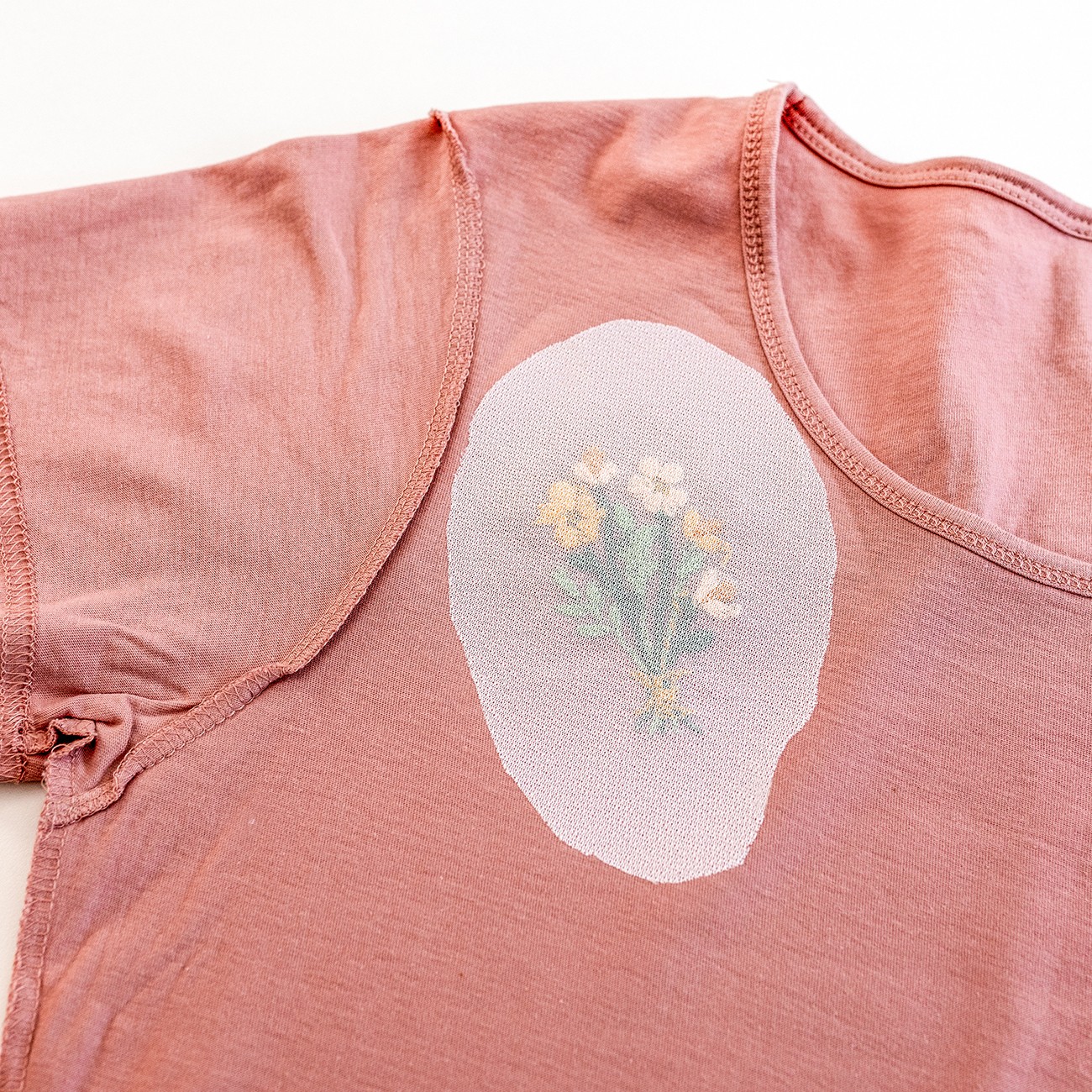
NOTE: You’ll find detailed step-by-step instructions on how to use stabiliser and Sulky Tender Touch at the end of this blog.
4. What type of needle should I use?
This depends on the weight of the clothing you’re stitching on, but you’ll generally need quite a sturdy needle when you’re using stabilisers and stitching onto clothing that’s medium-weight and heavier.
And you’ll most likely go through more needles than you’re used to (they have to work harder for you!).
If you’re working with heavier-weight fabrics, you can look to use sturdier needles (e.g. darning needles). But bear in mind you don’t want to leave visible holes in your fabric, which could happen if you’re using a needle that’s bigger than required.
I have found that the standard embroidery needles work well with cotton and denim – I use sizes 3-5. They get bent out of shape occasionally (especially on denim), but it hasn’t been an issue overall. But if there’s a lot of resistance – if you have to push really hard to get the needle through, and it’s pulling the fabric out of shape as you do – that’s a sign you could move to using a larger needle.
5. What threads should I stitch with?
It’s important to use a good quality thread that’s colourfast (i.e., it won’t bleed colour when it’s washed). This means you can wash your hand-stitched clothing without worrying that the colours in the design will leak onto the fabric.
Embroidery threads are generally marketed as colourfast, but I still recommend you take care with washing them (e.g. don’t use super-hot water).
If you’re not sure whether the threads you’re using are colourfast, you can cut a small piece of thread and lay it on a light-coloured test piece of fabric, wet them both, and then check if the colour runs onto the fabric. If no colour bleeds out, you should be good to go.
6. What about using a hoop?
Using a hoop is a fantastic way to get your fabric nice and taut, creating a more stable platform to stitch upon – which in turn makes it more enjoyable and easier to stitch your design.
When it comes to clothing, the same applies, and if you’re able to hoop the area you want to stitch on, I definitely recommend it. It helps prevent your fabric from puckering or going too floppy while you’re stitching along.
This applies even when you’re using a stabiliser – for example I apply a Stick & Stitch patch, and then dress the area in a small hoop.
Having said that, if you feel like your fabric (with or without stabiliser) is firm enough in its own right to stitch directly onto, you can go ahead and stitch your design without using a hoop.
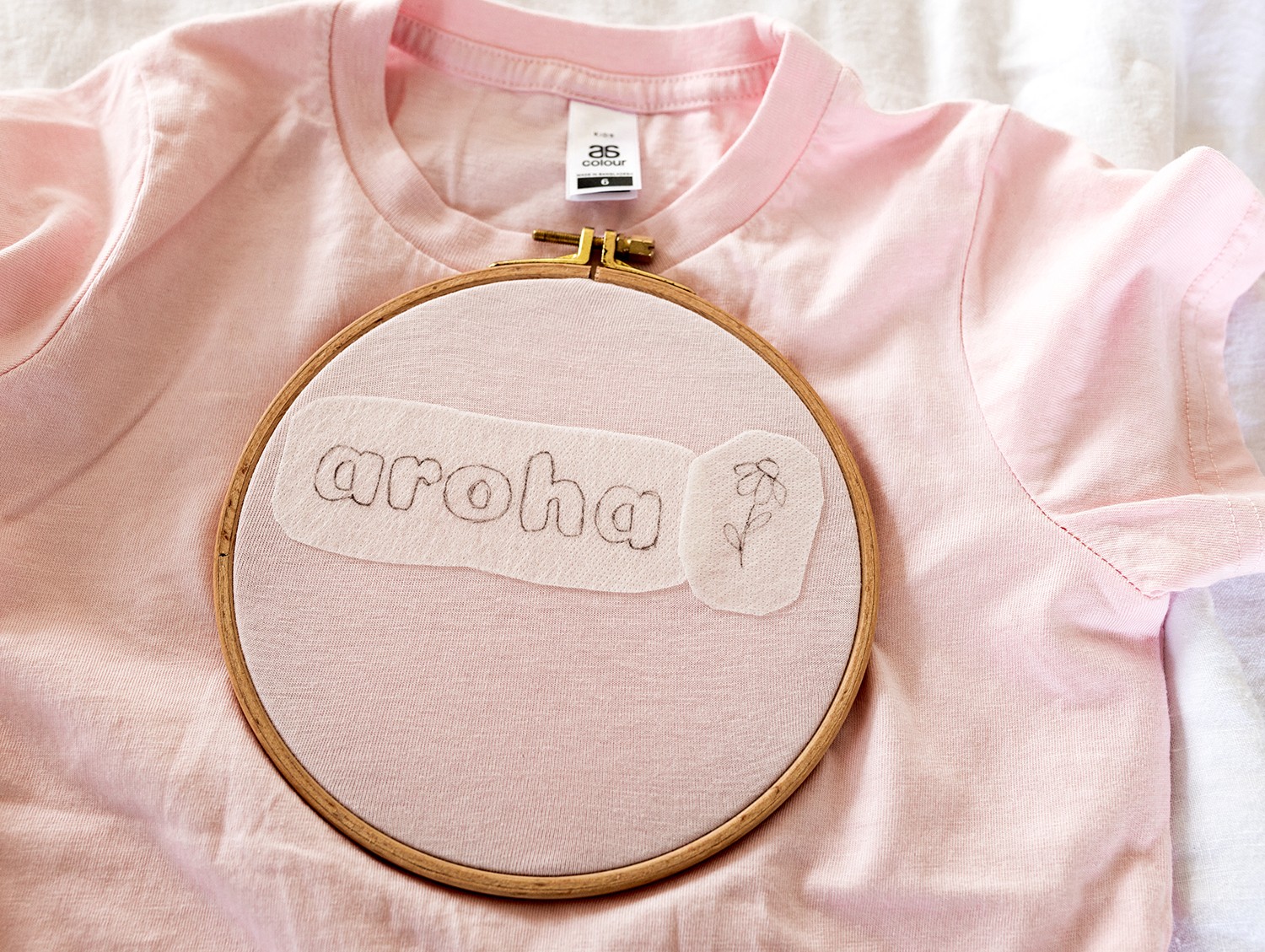
If you do use a hoop, there are some key things to look out for:
-
Hoop burn: If you leave your hoop on and/or pull the fabric too tight in it, you could damage the fabric and be left with a mark where the hoop sat. Chances are this will come off with washing, but not always. So, make sure you take your hoop off whenever your stitching session is finished.
-
Fabric damage: Take care you don’t pull your fabric too tight in the hoop. This is because it can distort your clothing, and you might pull it out of shape permanently (especially in the case of stretchy fabric, or light-medium weight clothing such as t-shirts and onesies). I suggest that you dress your fabric in the hoop just enough so that it feels firm to stitch upon, but not so tight you can feel it pulling out of shape. So for me, this is less taut than I usually recommend when dressing a piece of plain fabric in the hoop. It can be tricky to gauge, and you will get a feel for it with more practice - but take a look at the fabric in the hoop compared to the fabric outside, and make sure it’s not stretched a whole lot more.
-
What type of hoop? In terms of size, I find a hoop about 6 inches is a good multi-purpose size. I also think a standard wooden hoop (e.g. Nurge) works well, because you can be quite gentle with how tight you close it, and the smooth wooden rim is quite gentle on your fabric. This can be contrasted with a plastic ‘non-slip’ design hoop (e.g. Rico or Elovell) or the ‘faux wood flexi hoops’, which have a harder edge - I think these are more likely to leave hoop burn. If you are concerned about your hoop damaging stitches or your fabric, you can also bind your hoop before you dress it (this is covered in my tutorials online).
Overall, this is definitely an area where you’ll need to use trial and error to get comfortable with it. And it will really depend on the fabric of the clothing that you’re stitching onto. But don’t overthink it, just embrace enjoying the process!
Let's talk about stitching - the fun part!
When it comes to stitching onto clothing and accessories, you basically stitch along as you usually would, using all your general hand embroidery skills.
But it is definitely more challenging to stitch clothing, compared to a plain piece of fabric. But my goodness, it’s so worth it!
7. Here are some tips for your actual stitching method:
-
Short stitches are best: Clothing undergoes more wear and washing than a piece of embroidery art that is destined to be displayed on the wall. So it’s really important that your stitches aren’t too long, otherwise they’re likely to catch and get pulled out of shape over time. Plus, this type of embroidery doesn’t spend its life nice and taut in a hoop. So even if you’ve been using a hoop for your stitching, the fabric will revert back to being loose and slack once you take it out of the hoop. You’ll notice that stitches such as Satin Stitch, which look all lovely and smooth in the hoop, become slacker and looser once it’s off. So I recommend stitches that are usually 10mm or under, but up to 15mm should be ok.
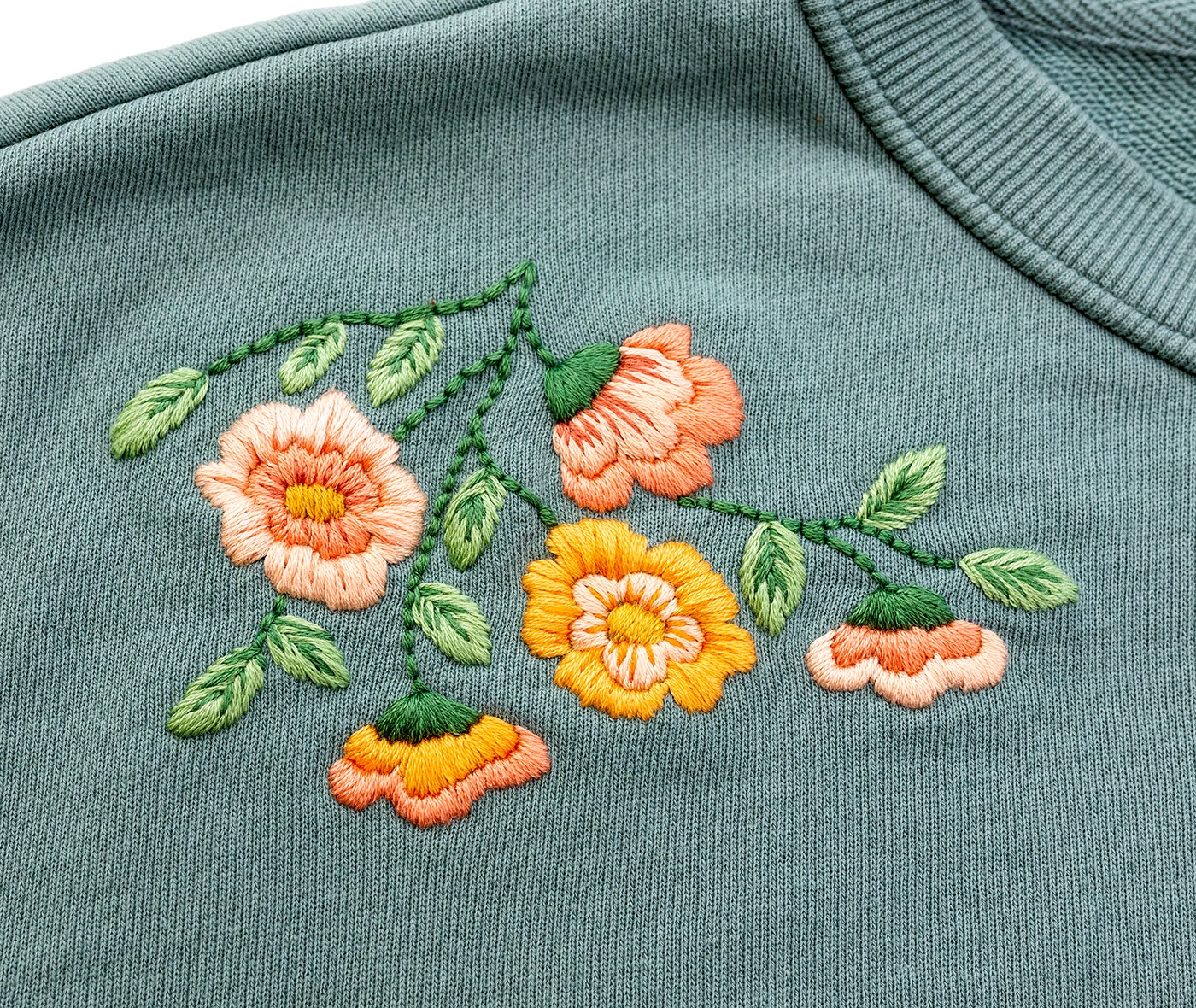
-
Don’t pull your stitches too tight: Go easy when you pull your slack through and form each stitch, and try not to pull your stitches so tight that they pucker or wrinkle the fabric. Because clothing is a bit trickier to handle than a plain flat piece of fabric, you might find it harder to gauge your tension – which is totally understandable! As a rule of thumb, I tend to pull my stitches a bit less tight than I would on a standard piece of display embroidery. I make sure the stitch is sitting nice and flush with the fabric, rather than pulled tight over it. Using a stabiliser will totally help with this, but you still need to be careful. See the images below for an example of how the stitches were pulled too tight on the mustard piece (see how it has puckered?) vs the blue piece which is sitting a bit nicer.
-
Access to the area: This is one of the biggest things I didn’t even think about when I first started on this journey! When you’re choosing where to place your design on your clothing, think about whether you’ll be able to easily access the underside of your design. Because if it’s really tricky to access (e.g. on a pocket or surrounded by folds of clothing), it means you won’t be able to stab your stitches - you’ll have to sew them all. That in itself adds on a whole challenging layer of complexity. Your access to the design will also depend on how tight or loose the item of clothing is. For example, it’s relatively easy to access the underside of the middle of a sweater (through the wide neck opening), compared to the knees on a pair of leggings. I found it easiest to stitch on areas near the neckline, or waistline. So keep this in mind, especially while you’re learning and getting the hang of embroidery on clothing.
-
Less strands is better: Using less strands of floss will mean it’s easier to push and pull your needle through the fabric and any stabiliser you’re using. And it’s less likely to leave noticeable holes in your fabric. I found that 3 strands was my go-to amount (2 would also be good), and I only used 6 strands for very simple designs (e.g. Back Stitch lines or fillers), when I wasn’t going back into the same hole multiple times (e.g. like you might on a petal in Satin Stitch).
-
Injuries: I’ve got to say, it seems easier to by- mistake stab yourself with your needle when there’s layers of clothing involved! Also, you need more oomph to push your needle through the stabiliser and/or fabric – as a result you can get a tender spot on your pushing finger. At times I needed to use a band-aid, but a thimble would do the trick too. So please, take extra care in this sense.
-
Snipping care: Given you’re stitching onto clothing that you want to be able to wear, I think you need to take extra care that you don’t by mistake snip it when you are trimming tails.
-
Sticky needles: Using Stick & Stitch patches means you end up with a sticky residue on your needle, which can make it harder to pass through each stitch. So if this happens, you can gently wipe your needle clean, or grab a fresh needle to use instead.
-
Design shrinkage: I’ve found that washing my hand embroidered clothing means that the stitches shrink. This hasn’t affected the overall project, but it’s just something to bear in mind if you’re wanting to create a design that ends up a particular size.
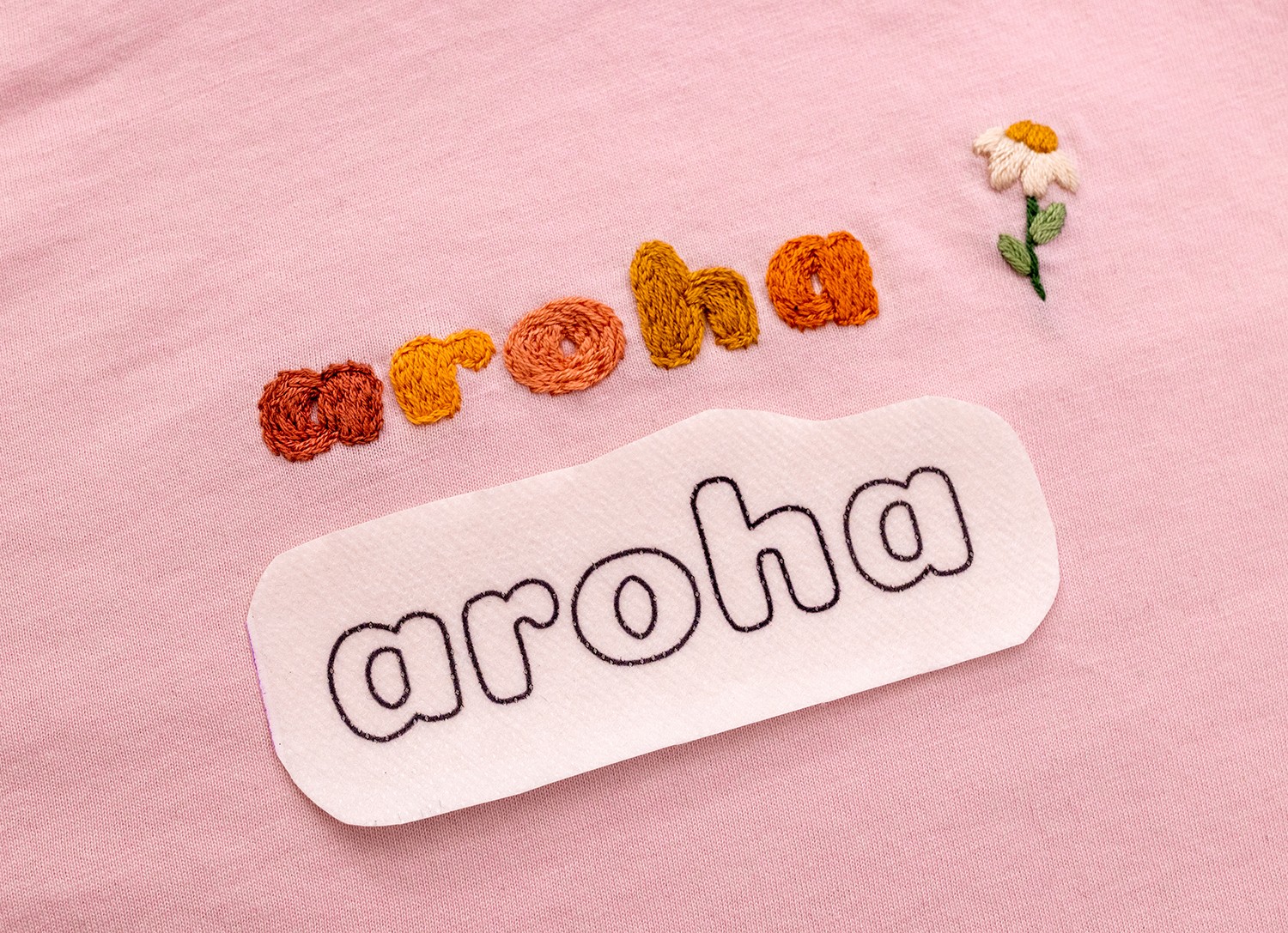
8. Stitch Techniques
Following on from all the tips above, there are certain stitches that I definitely recommend over others, when it comes to embroidery onto clothing. Of course, you can totally try any stitches you like, but here’s my thoughts:
Fav stitch techniques for embroidery onto clothing:
Ones I’ve actively avoided:
-
And any stitches over 15mm (e.g. longer Satin Stitch).
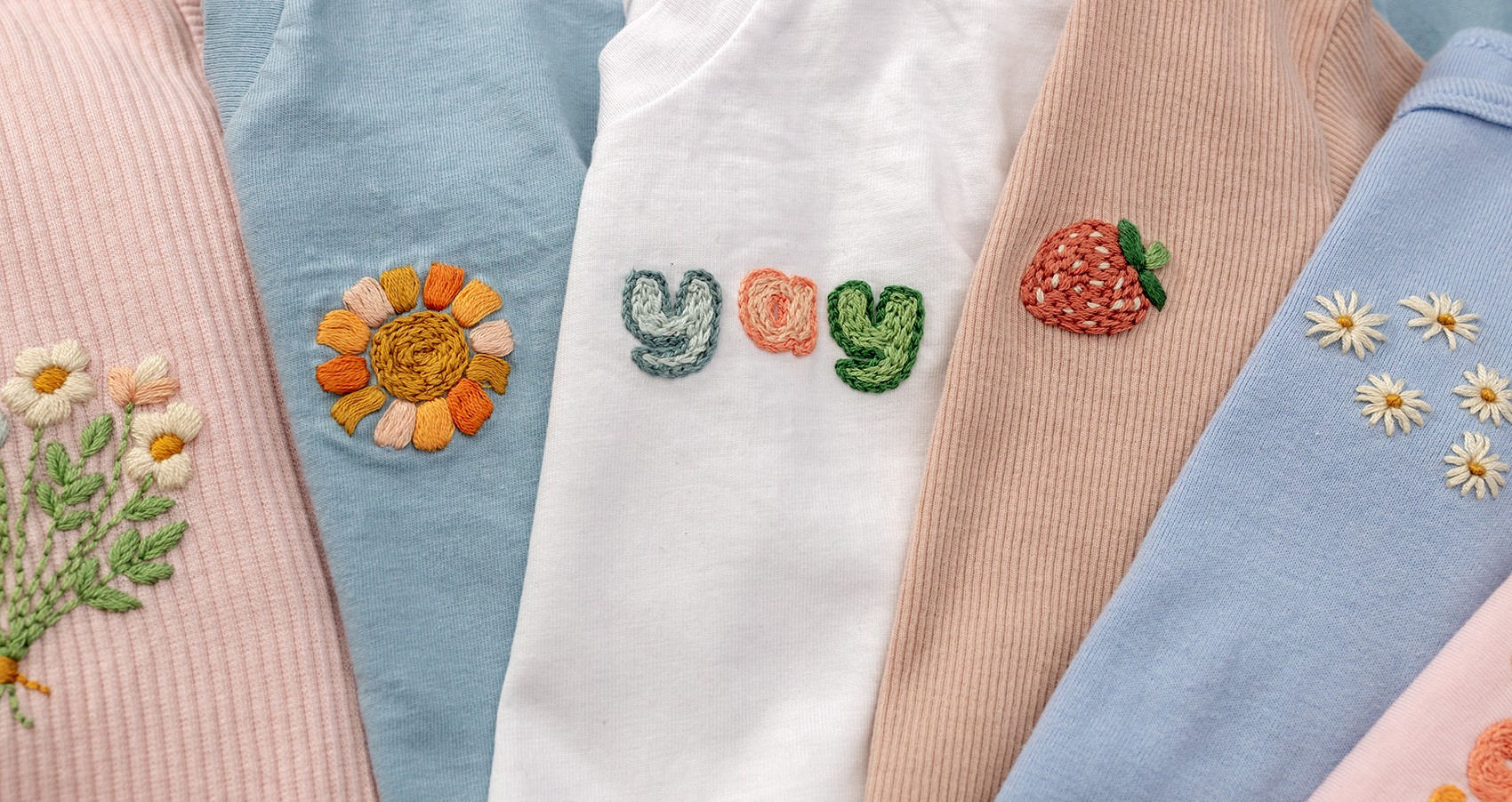
9. How do I Secure my Stitches?
Clothing will undergo more wear and washing than a piece of embroidery art that you display on the wall, so you need to pay extra consideration to how securely your stitches are held in place. There are a few points to consider:
-
Stitch technique: It helps if you’re following my tips about keeping your stitches shorter (e.g. no long Satin Stitch), and choosing stitch techniques that are more sturdy in the first place (e.g. avoid Woven Roses). This way, your stitches will be more snug and less likely to snag in the first place
-
Knots: Some experts will say you shouldn’t use knots, even on clothing. But I have found that knots are the best way to secure stitches in this case. They will help keep your stitches secure, even when you’re putting your clothing through the wash or giving it lots of friction through general wear. You might find adding a double knot helps in the long run too. You’ll need to take care not to pull your knots too tight (this could distort the fabric). And be sure to weave your tails into the underside of the stitching – this means your tails are tidied into the design and are less likely to leave shadows through your fabric.
See the example below of what the underside of my stitching looks like (this is after it’s been washed and dried a couple of times).
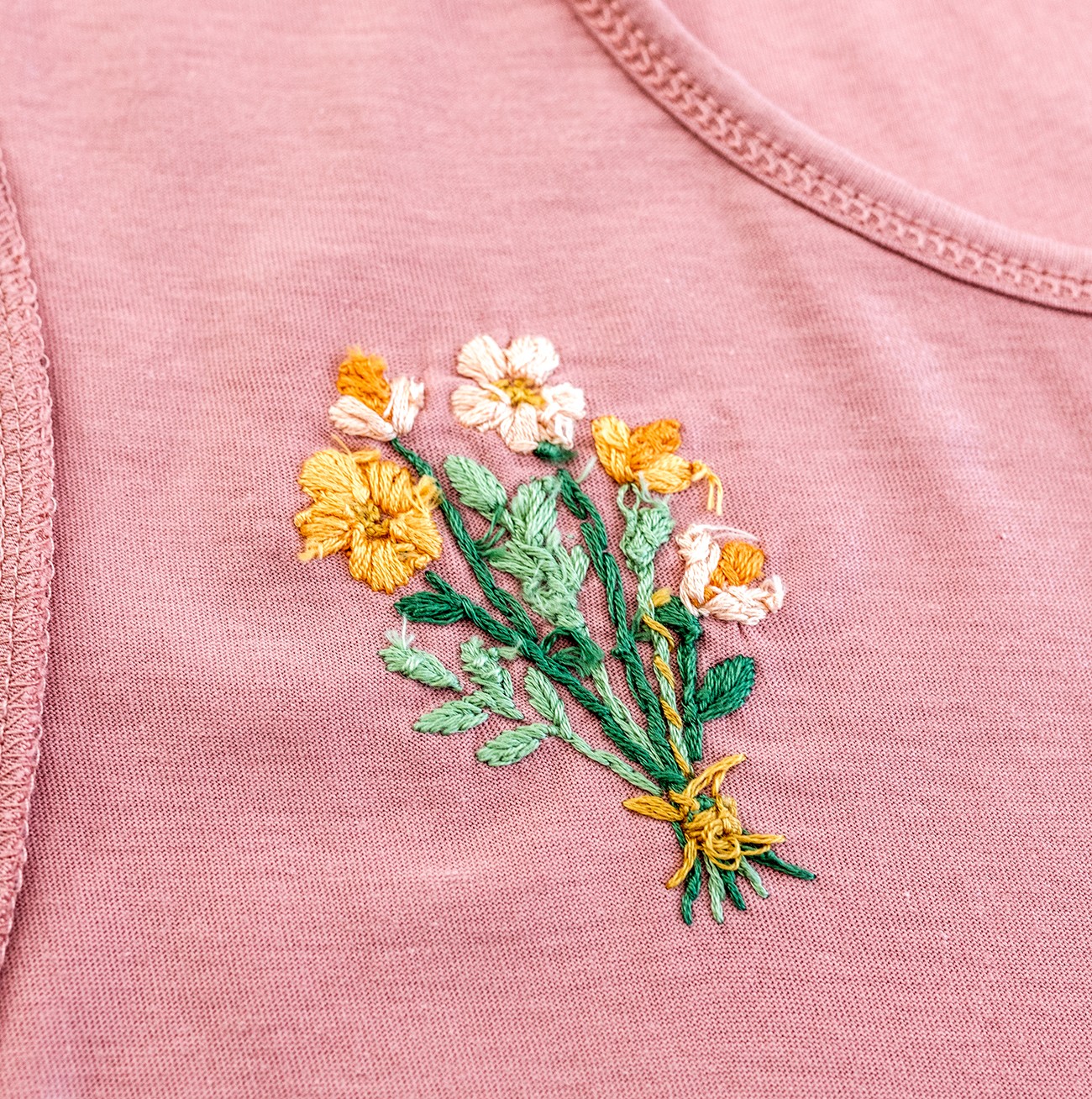
Here’s a recap of my method for using knots to secure my threads
Note: This is the same method as what I do on usual embroidery.
Step 1
When you’ve finished stitching, weave your needle under a nearby stitch.
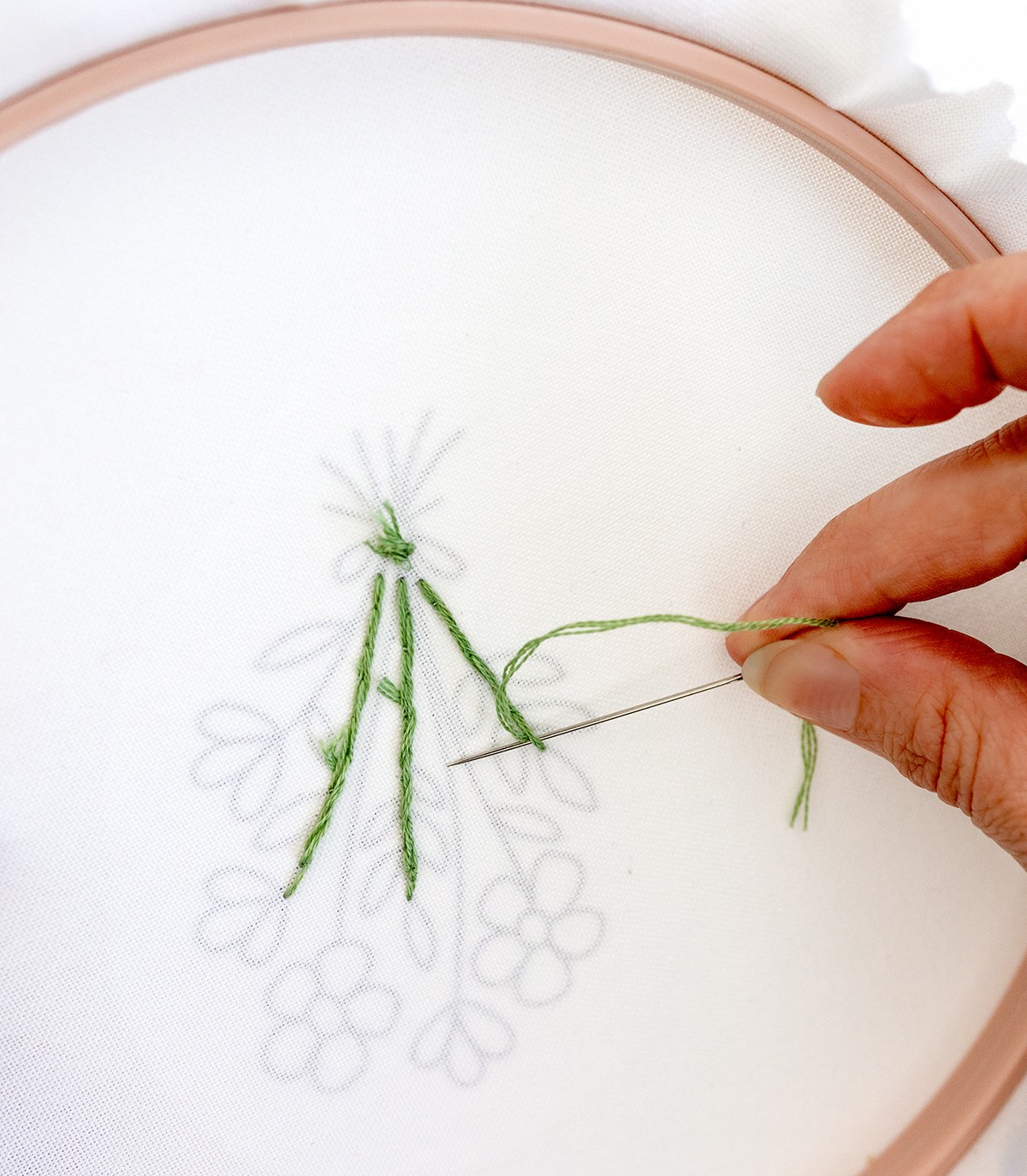
Step 2
Before you pull all the slack through, leave a little loop, and duck your needle back through the loop.
Step 3
Gently pull it tight to form a knot, so that it sits flush with the underside of your fabric. It helps if you hold the fabric around the knot firm at this point, so that it doesn’t get pulled out of shape as you tighten the knot. You can do a second knot at this point if you wish.
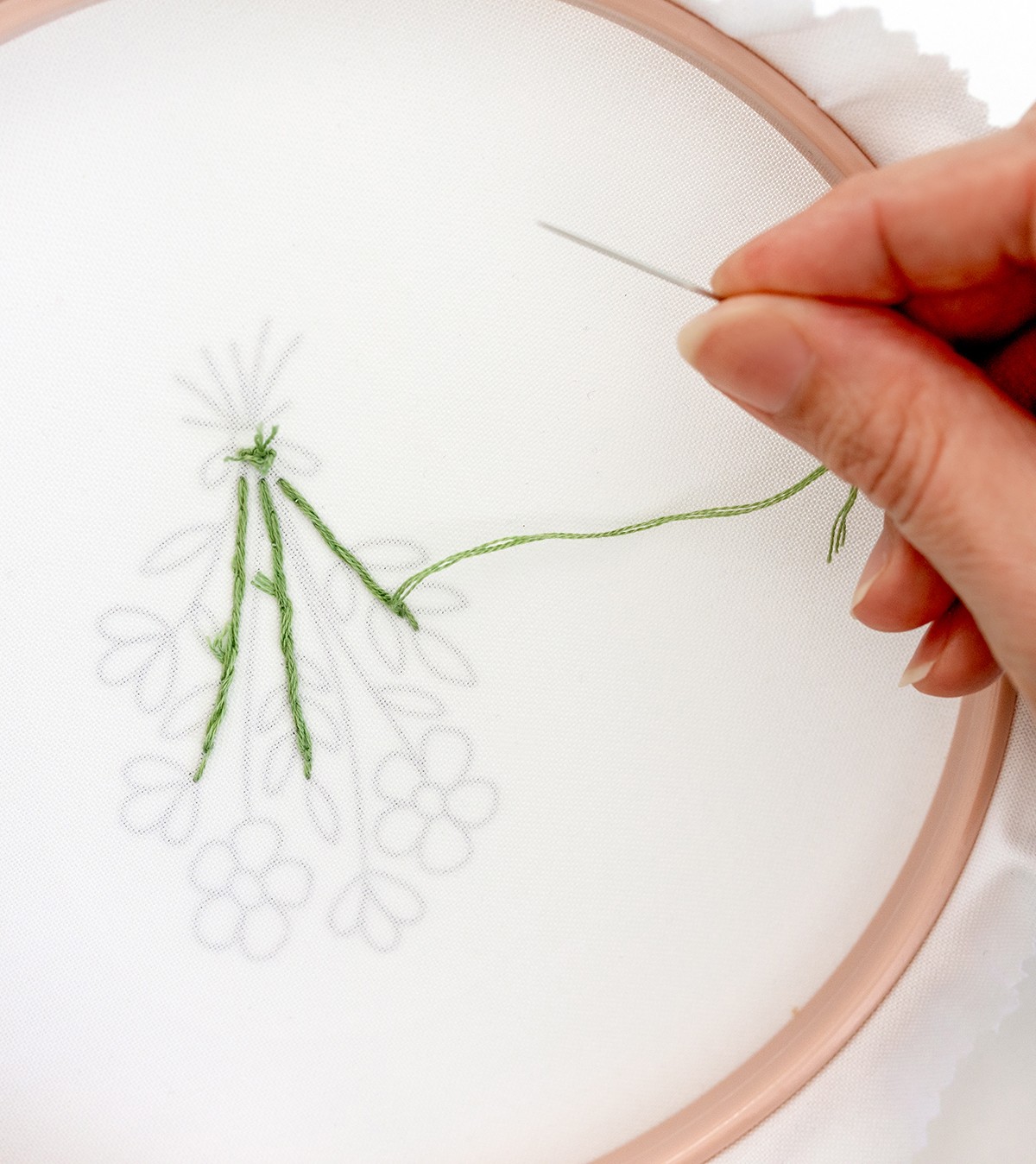
Step 4
Then weave your tail under nearby stitches at least a couple of times, so that ideally at least 10mm of tail is tucked into the design. Then you can snip it off quite close to the fabric.
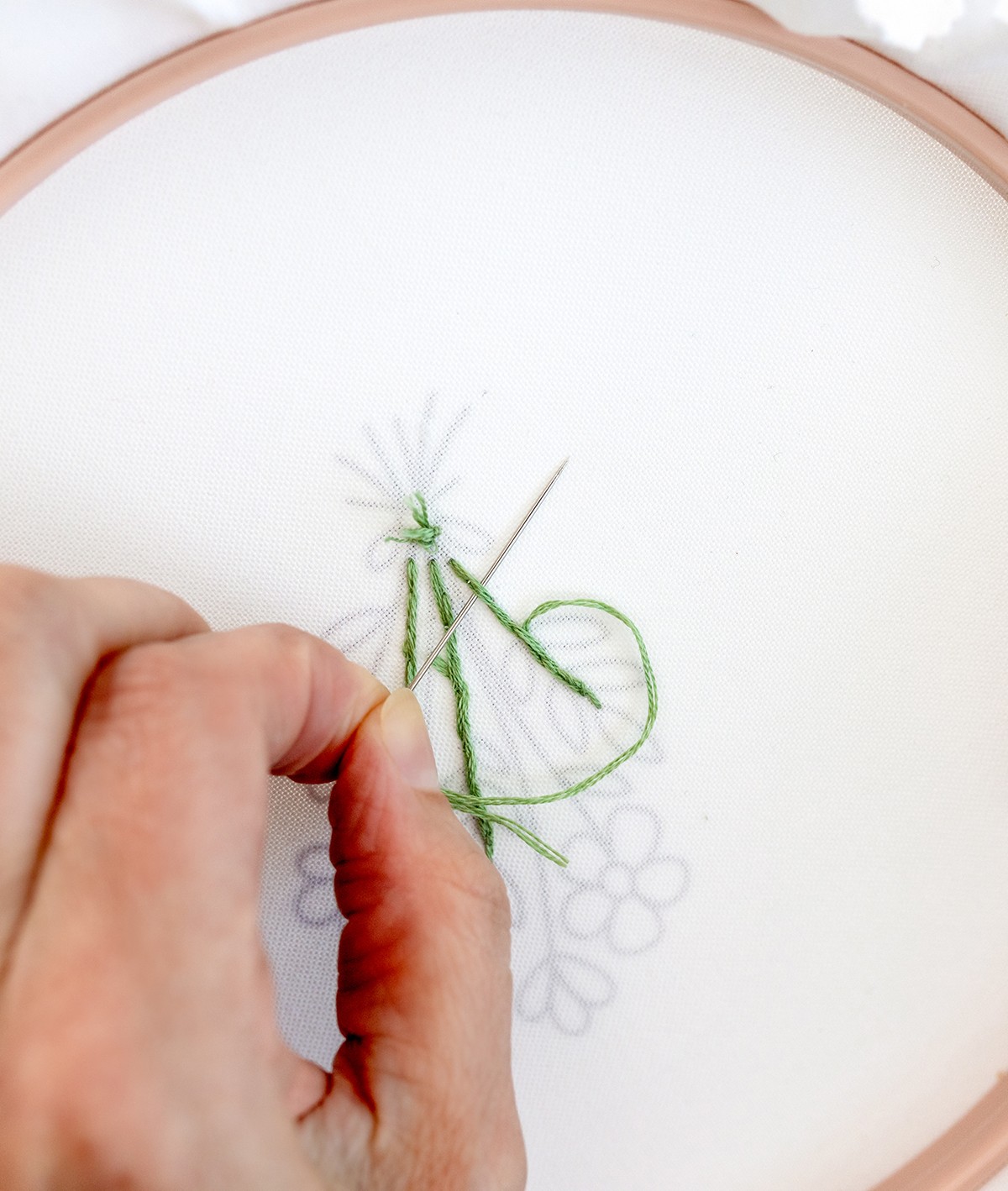
10. Adding a Backing
This is totally optional, but you can add a backing to the underside of your design, to reduce the amount of friction your stitches are exposed to over time.
To learn more, go to the section about stabilisers-style backings earlier in this blog.
11. What about Washing?
Most experts recommend that you hand wash only, and line dry, rather than using a clothes dryer. This is gentler on the stitches and means they’ll hold in place for longer, and stay in nicer condition.
You’ll probably find that your stitches shrink a bit through washing, and they get a bit wavy, clustered together, and possibly fuzzy. As a result, it’s unlikely you’ll be able to retain the lovely soft, satiny look you achieve pre-washing (and that you get to admire with hoops that go straight on the wall). But overall, it should still look great.
I have been throwing my embroidered clothing in the washing machine on a standard cycle, and line drying them. I’ve totally avoided using a clothes dryer. I’ve found that my stitching has all held up well so far. I find that after the first wash, the embroidery feels a bit stiff and taut. But after a second wash, it feels a lot softer and nicer.
So this part of the journey is definitely something you can experiment with too, especially if you’re like me and don’t want to spend your energy hand washing things.
Just be aware that any machine washing and drying will shorten the lifespan of your embroidered designs.
I would also recommend using a delicate wash setting, and a ‘delicates’ washing bag if possible.
See the images below for an example of how the stitches wear after a few cycles through the washing machine.
If you’re concerned about preserving your stitches, you can apply a permanent backing over the underside, which will protect them in the washing process.
To learn more, go to the section about Stabilisers – ‘Cover a stitch’ style backings earlier in this blog.
And if you are particularly concerned about colour in the threads bleeding, definitely check out the manufacturers washing guidelines for more info.
How to use Stick and Stitch Stabiliser - Step-by-Step instructions
Here’s a breakdown of how I use stick and stitch. This will be similar to using other brands such as Sulky and DMC Magic Paper. You can also refer to the usage instructions on the manufacturers packaging and website.
Here’s my method:
Step 1: 'Draw'
Trace or free-hand draw your design on a sheet of the Sticky Fabri-Solvy (the stabiliser material).
TIPS:
-
Printing: You can print your design onto the sheet of Sticky Fabri-Solvy, using the manufacturers guidelines. Note that the sheet is smaller than an A4 size (it’s US Letter Size, 11 x 8.5 inches), so you’ll need to check the image placement before you print.
-
Tracing: If you’re tracing your design, simply place a sheet of the Sticky Fabri-Solvy over the top of your printed design (or as viewed on your screen). The Sticky Fabri-Solvy should be transparent enough for you to see the design and trace over it.
-
Choosing the pen or ink: In terms of which pen to use, I think it’s ideal to use one that won’t stain your fabric during the washing off process. I like to use a Frixion pen, or you could use a water soluble embroidery pen. Having said that, the pen is actually only marking the Sticky Fabri-Solvy, which is totally rinsed away - so I’ve experimented with using plain pens (e.g. ball- point or thin marker) and that seems to work fine too. I just like to be super careful! If you’re concerned the printer ink or pen you’re planning to use will leak onto the fabric and stain it, then you can do a test on a piece of scrap fabric first. Draw or print your design on the stabiliser, stick it to your fabric, then rinse it off. If it doesn’t bleed the onto your fabric, you should be fine.
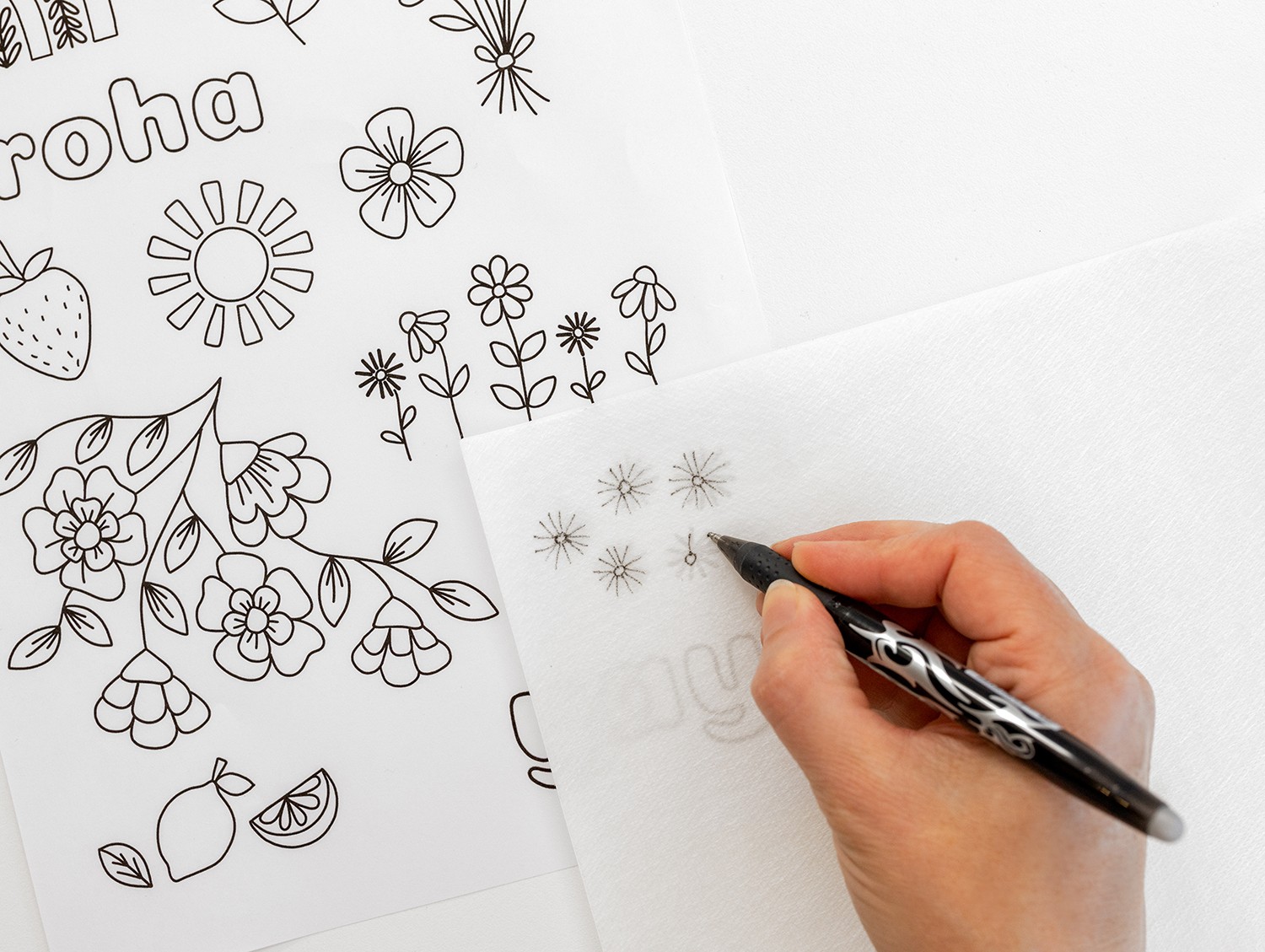
Step 2: 'Cut Out'
Now cut out your design into a patch, leaving a margin of at least 10mm. Also, make sure you cut a shape that has curved corners, so that they don’t easily catch and pull up.
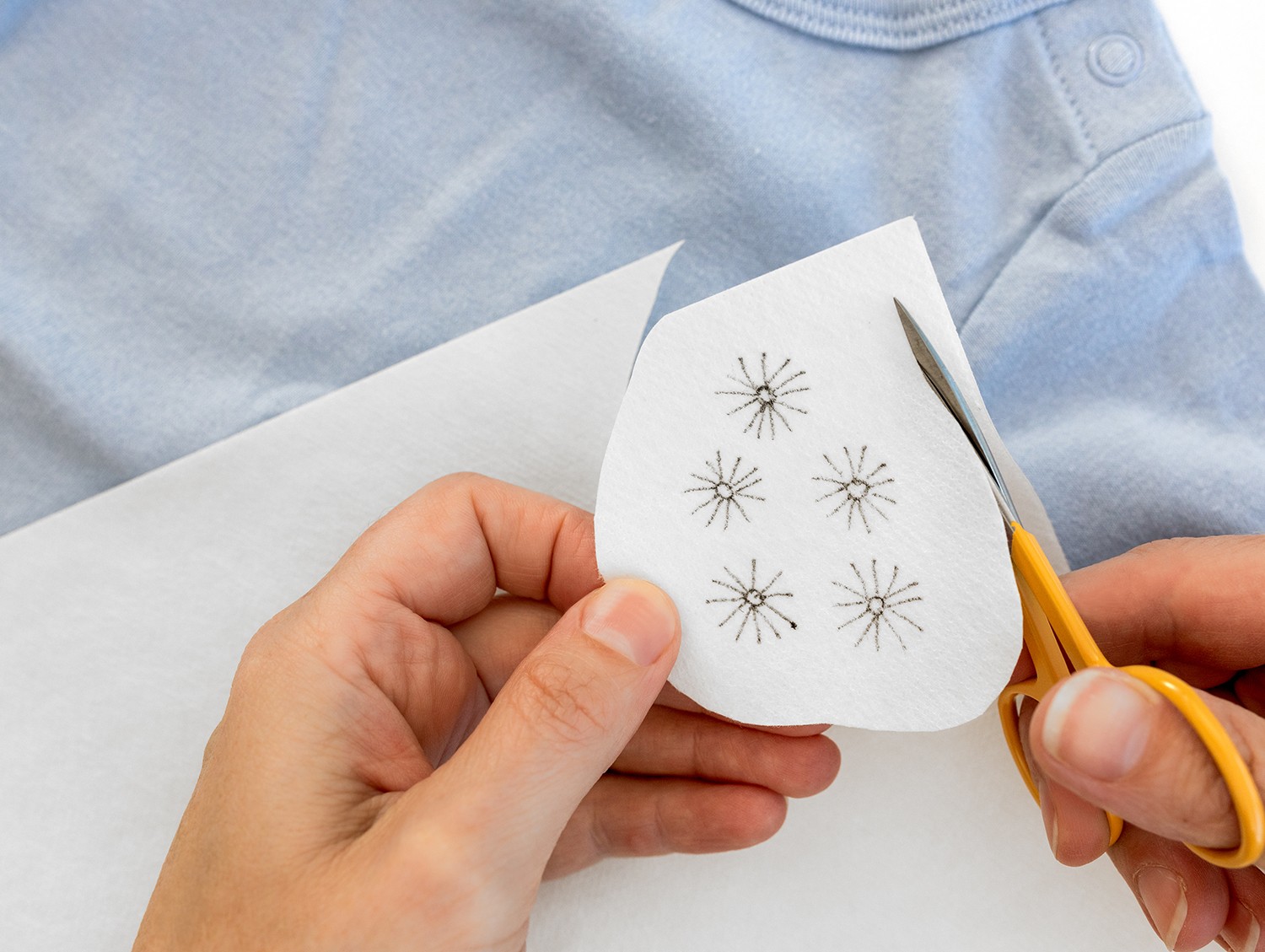
Step 3: 'Stick'
Remove the backing, and smooth the patch (sticky side down) to the right/front-side of your fabric, in the exact spot that you wish to stitch your design on.
TIPS:
-
If the stabiliser isn’t sticking in place, you can do a light stitch around it to keep it in place (e.g. a loose Running Stitch), and then remove it before you rinse of the patch.
-
I find the patches get a bit wrinkly if you leave them for too long. So aim to stitch within 2–4 days of application, and make sure you store your work so that it's nice and flat in between stitching sessions.
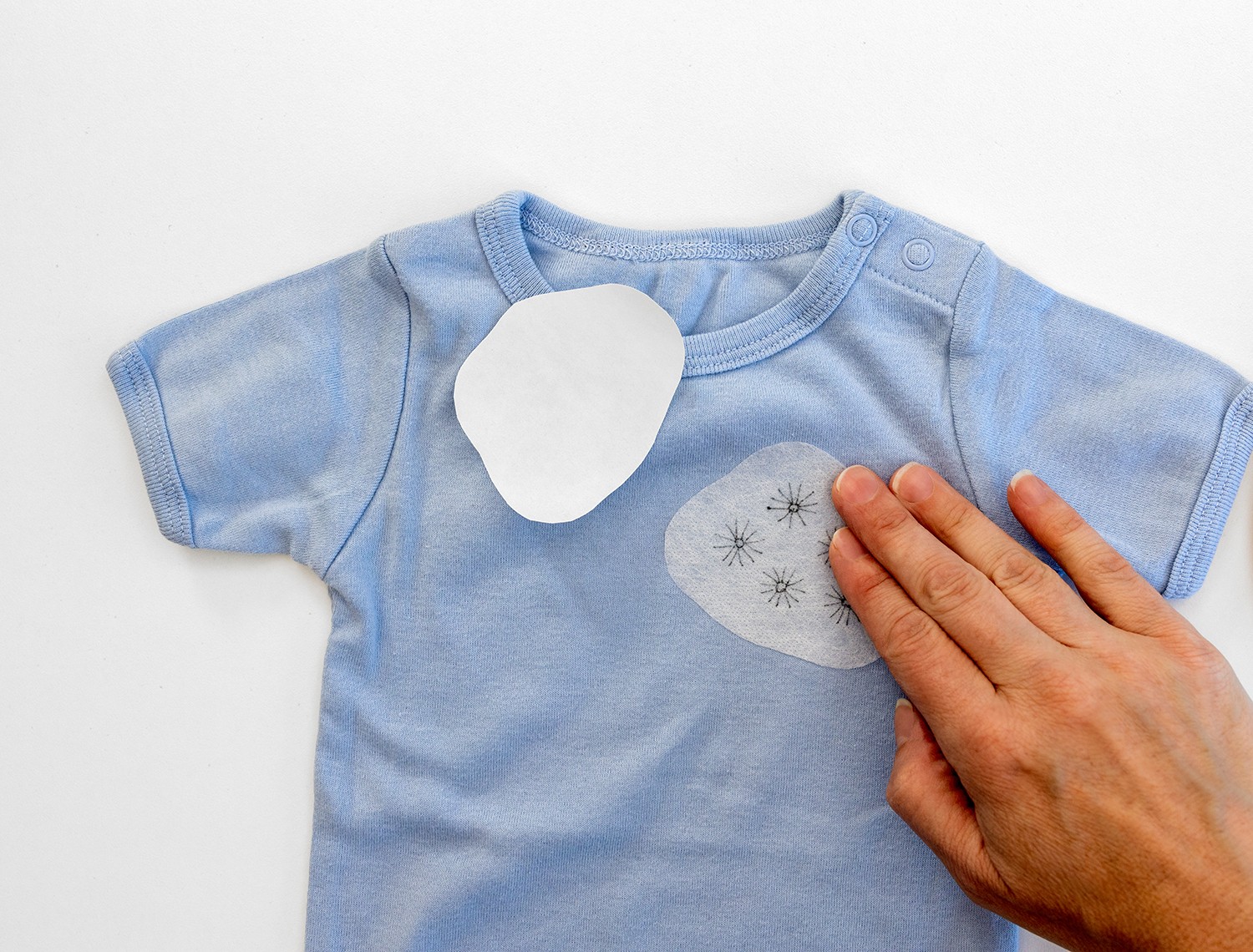
OPTIONAL: At this point, you can dress your fabric in a hoop if you choose to.
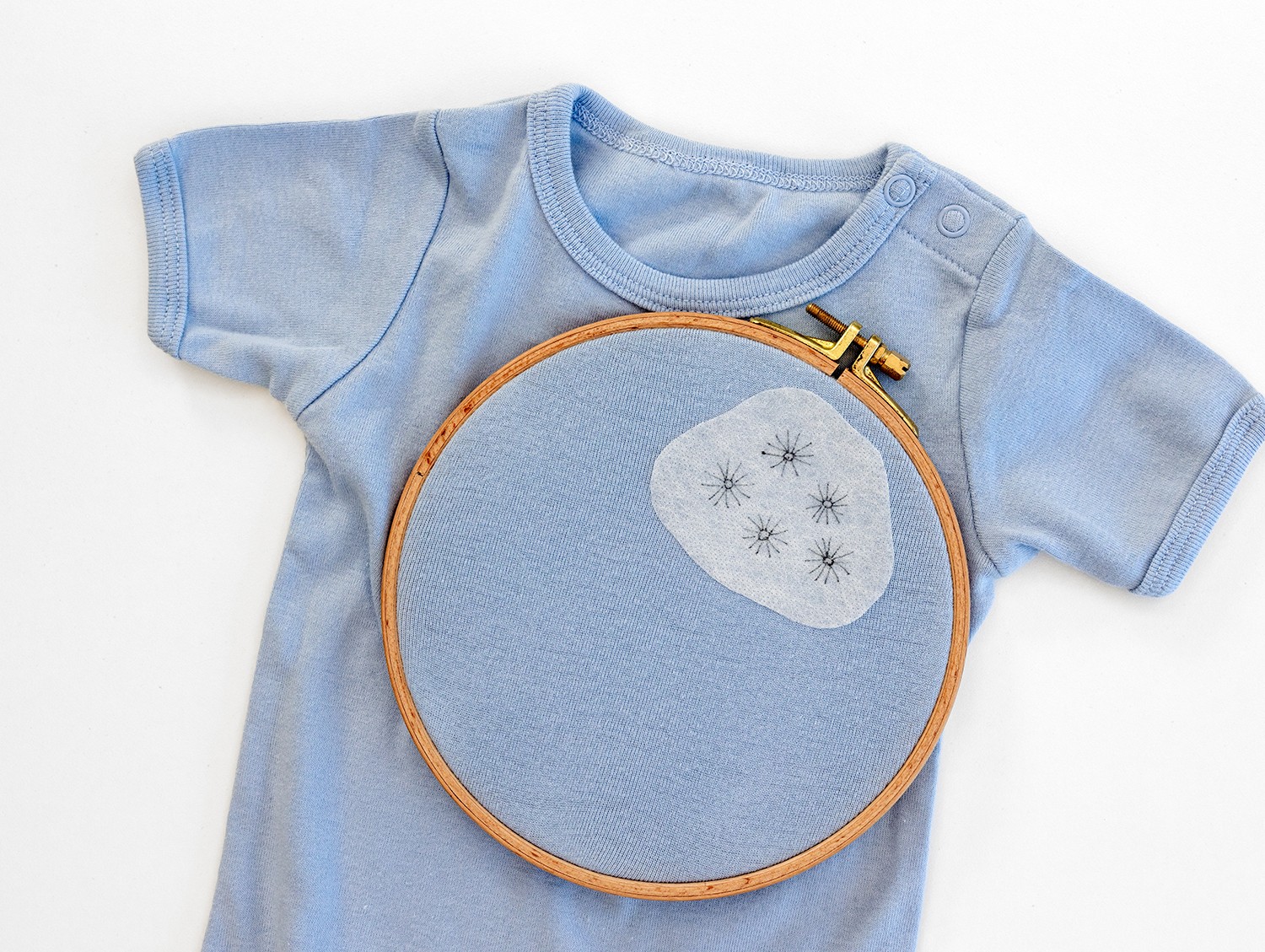
Step 4: 'Stitch'
Now stitch your design right over the top of the stabiliser, onto your fabric.
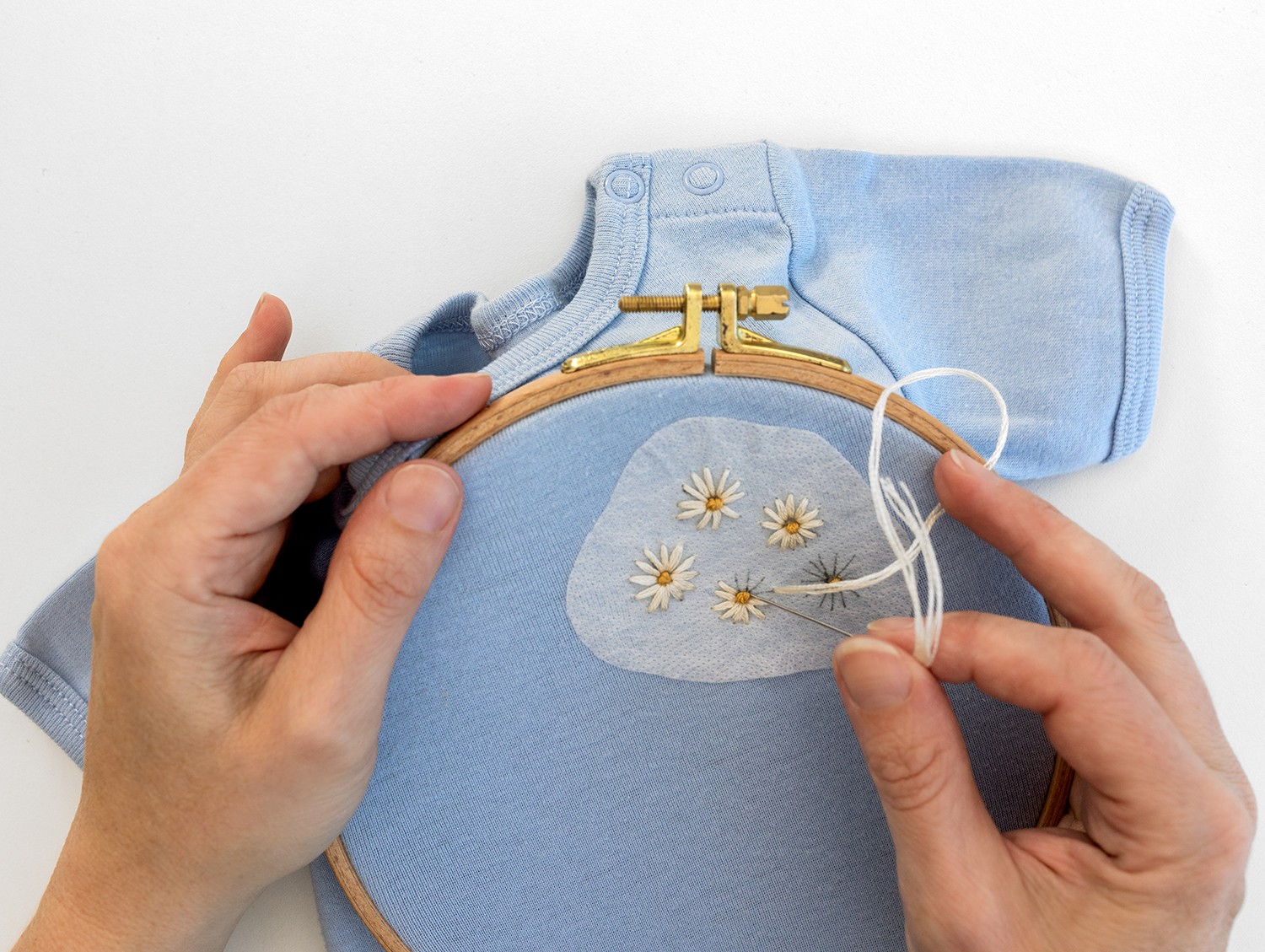
Step 5: 'Rinse Off'
Now it’s time to remove the patch of stabiliser.
Immerse the entire area in luke warm water. Wait a few moments, and you’ll see it become more see- through and dissolvable.
You can now gently use your fingers to rub away the stabiliser patch, and most will come off really easily. Sometimes the bits right beside the stitches need a gentle rub to encourage them off.
If preferred, you can do this under running water as opposed to a water bath.
Then once it looks like all of the stabiliser has been removed, gently squeeze out the dripping water (or pat between towels) until it feels ready to line dry.

Step 6: 'Wash'
Once I’ve washed off the patch, I generally wash the entire piece right away. The stitched design can feel a bit stiff when it first dries, but it’s usually a lot softer after a second wash.
And it’s as easy as that!
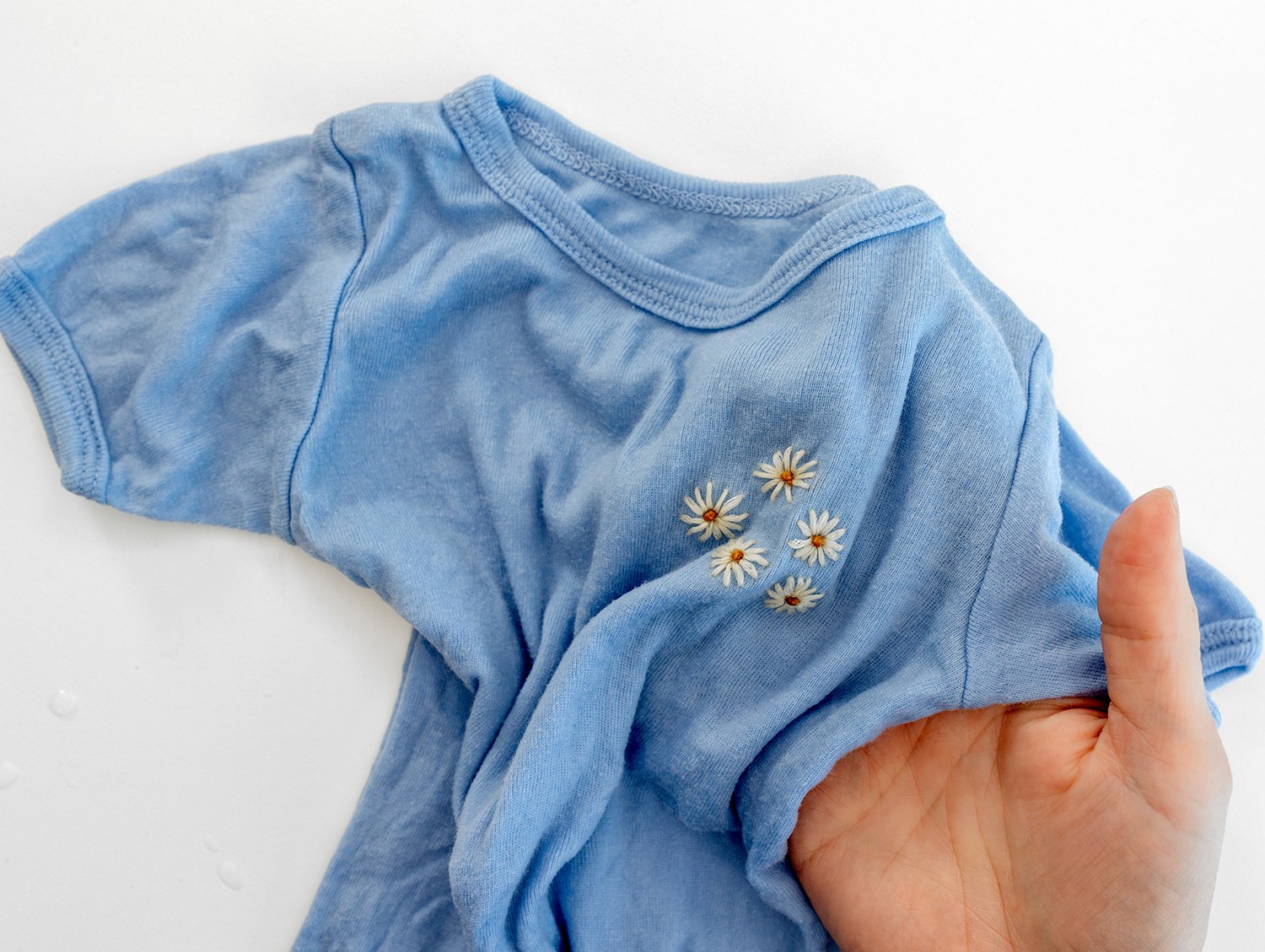
In this video, I’ve shared what Sulky Sticky Fabri-Solvy is, and how to use it when embroidering on clothing, which you will hopefully find really helpful.
How to use a ‘Cover-a-Stitch’ style backing
Here’s a breakdown of how I use Sulky Tender Touch. You can also refer to the usage instructions on the manufacturer’s packaging and website.
Step 1: 'Cut'
First, cut out a piece so that it’s about half 1 an inch (approx. 1.2cm) wider than the design. Make sure that you cut curved corners, rather than sharp corners which might catch and pull up.
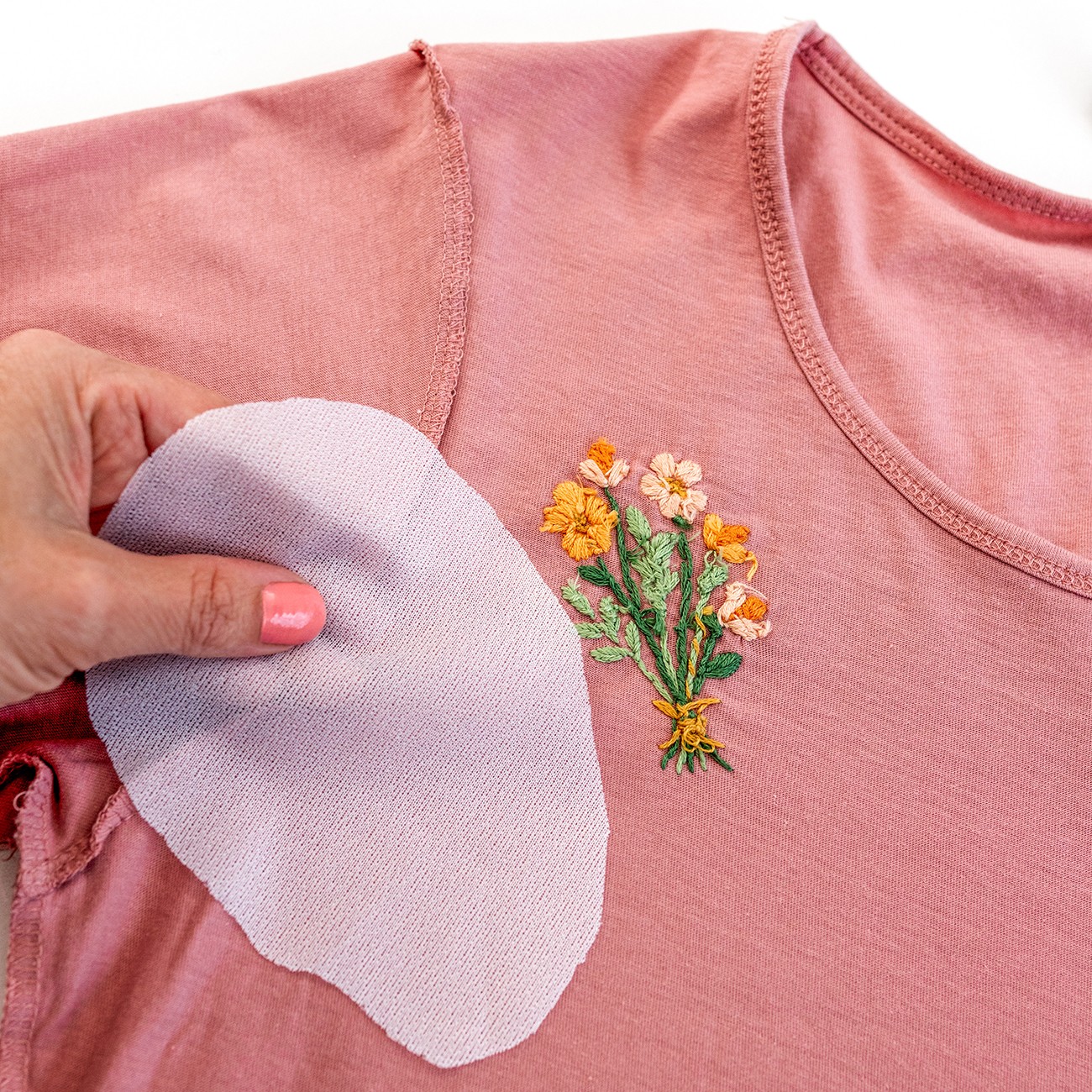
Step 2: 'Place'
Then place the patch over the underside of your finished embroidery, with the coarse side down. You’ll be able to tell which is the coarse side by touch (the other side is quite a bit smoother).

Step 3: 'Iron'
Now iron the material on, by pressing for 10 - 15 seconds until it fuses (sticks) to the fabric. The recommended temperature is 250 – 270 degrees Fahrenheit (120 – 130 degrees Celsius). It’s a good idea to test your fabric first, in terms of the heat tolerance.
And that’s all there is to it!
Washability: This is a permanent backing, which is designed to withstand washing. Having said that, its ability to stick will depend on how well it was adhered in the first place, and whether you are hand washing or throwing it in the machine. The Sulky brand blog suggests that if you are having difficulty with it coming off, you should cut the Tender Touch with pinking shears (the ones that give the zig- zagged edge) and to iron it on with steam.
In this video, I’ve shared my top tips for washing embroidered clothing items, which you will hopefully find really helpful.
Conclusion
So, there we have it, a whole bunch of tips to get you started on your journey with embroidery onto clothes and accessories.
I really hope you now feel confident about how it all works. But most of all, I hope you feel super excited to dive into it! Because I know how rewarding it is – not only do you get some lovely rewarding me time... you get to enjoy wearing your special creations!
What's next?
If you enjoyed learning all about embroidery on clothing, then you are probably dying to get started! So the perfect next step for you is to grab one our our Stick and Stitch packs or grab my pattern guide 'Happy Designs for Clothing'.
In this guide, you'll find a dozen super cute designs that are perfect for you to practice your new skills of stitching onto clothing.
Each of the designs also has a stitched example and guide in the pattern, so I basically hold your hand and make it as easy as possible for you to have success with your own stitching!
My Happy Designs for Clothing pattern guide is such a great way for you to practice your new skills!
So, which piece of clothing are you going to stitch onto first?
I would love to hear how you go on your journey, learning to stitch onto clothing.
Make sure you share you progress with me! Just tag me on the 'gram @cleverpoppy.
Happy stitching!
Julie xx

